Best mountain bike tires 2025 – top-rated trail, XC, and gravity options for ultimate grip and speed
The best mountain bike tires will provide plenty of traction to your riding experience while balancing durability, control, and speed
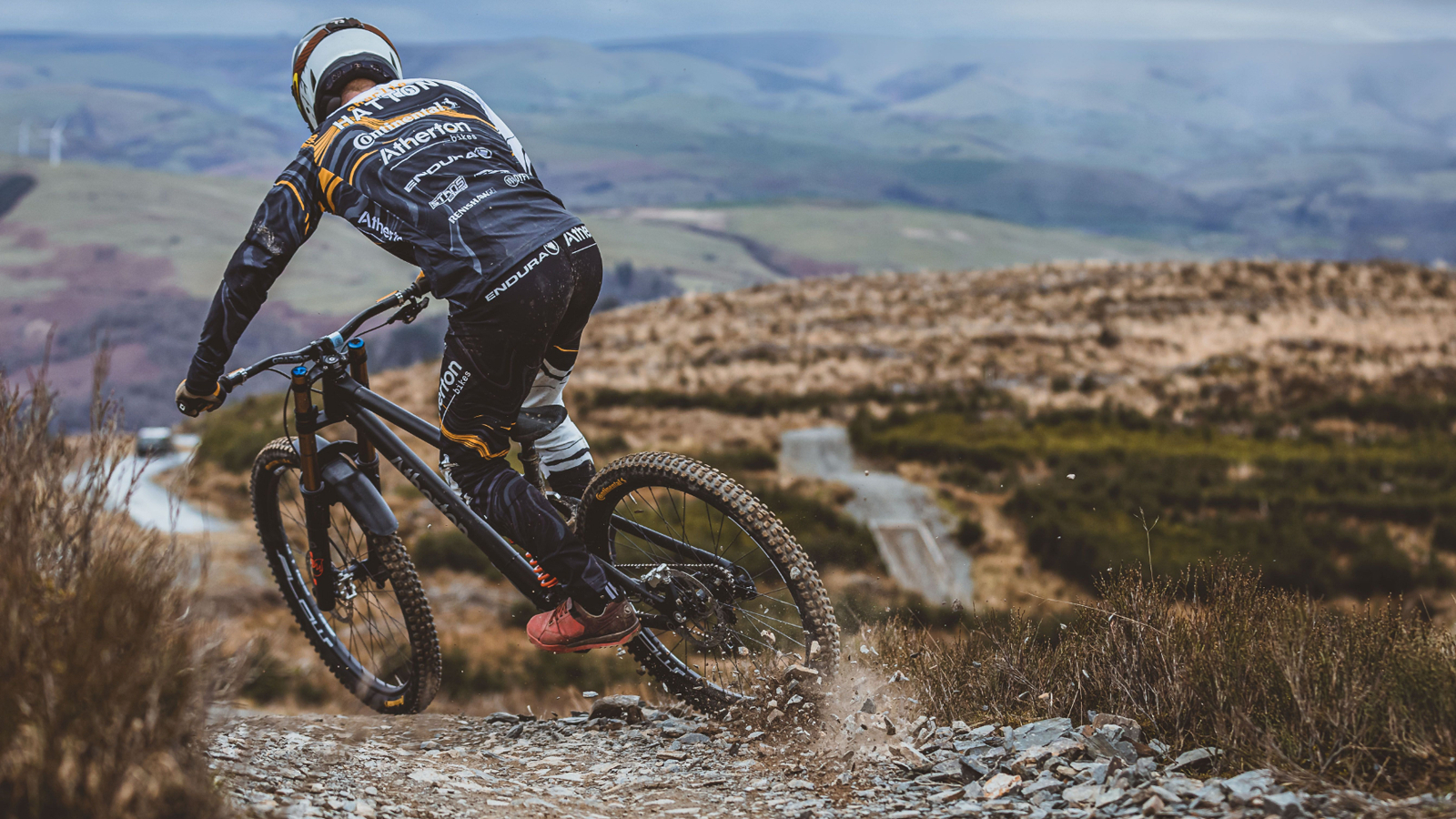
- Quick list
- 1. Best trail overall
- 2. Best fast-rolling trail
- 3. Best trail for grip
- 4. Best value trail
- 5. Best all-rounder trail
- 6. Best XC overall
- 7. Best value XC
- 8. Best downcountry
- 9. Best versatile XC
- 10. Best gravity overall
- 11. Best value gravity
- 12. Best gravity for cornering
- 13. Best gravity for stability
- 14. Best gravity front tire
- 15. Best gravity tire for winter
- 16. Best gravity tire for durability
- How to choose
- How we test
Choosing the best mountain bike tires will play a massive role in the way your mountain bike behaves and can be the difference between staying upright on the trail or bailing spectacularly. Not only do they provide grip, but the best mountain bike tires must also roll quickly and dampen vibrations and impacts.
No different from choosing the best mountain bike wheels, it's vital that your tire choice matches your riding style and the types of trails you find yourself on. Cross-country tires prioritize less rolling resistance, while downhill, enduro and trail tires have bigger knobs and tougher casings. That's why we've split this best mountain bike tire guide into different sections for different riding disciplines. However, we also have dedicated guides to the best XC tires and the best MTB trail tires.
Our expert testers have thoroughly tested the best tires for trail, cross-country, and gravity riding to determine which tires are the best options. Read on to see our picks of the best mountain bike tires, or head to the bottom of the article for more on how to choose MTB tires. And if you fancy even more tire tech, see our detailed guide on everything you need to know to choose the best MTB tires for your riding.
The quick list
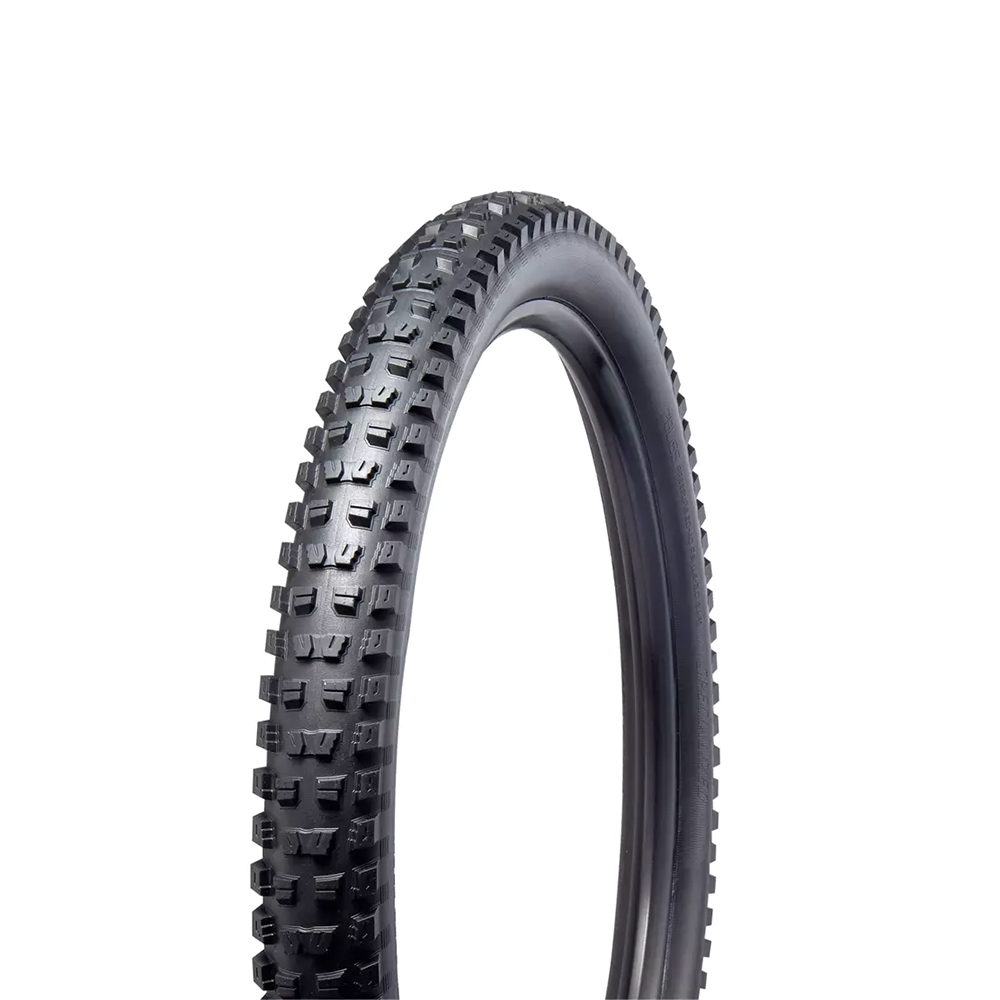
Best trail MTB tire overall
Outstandingly controlled and super grippy in a range of conditions.
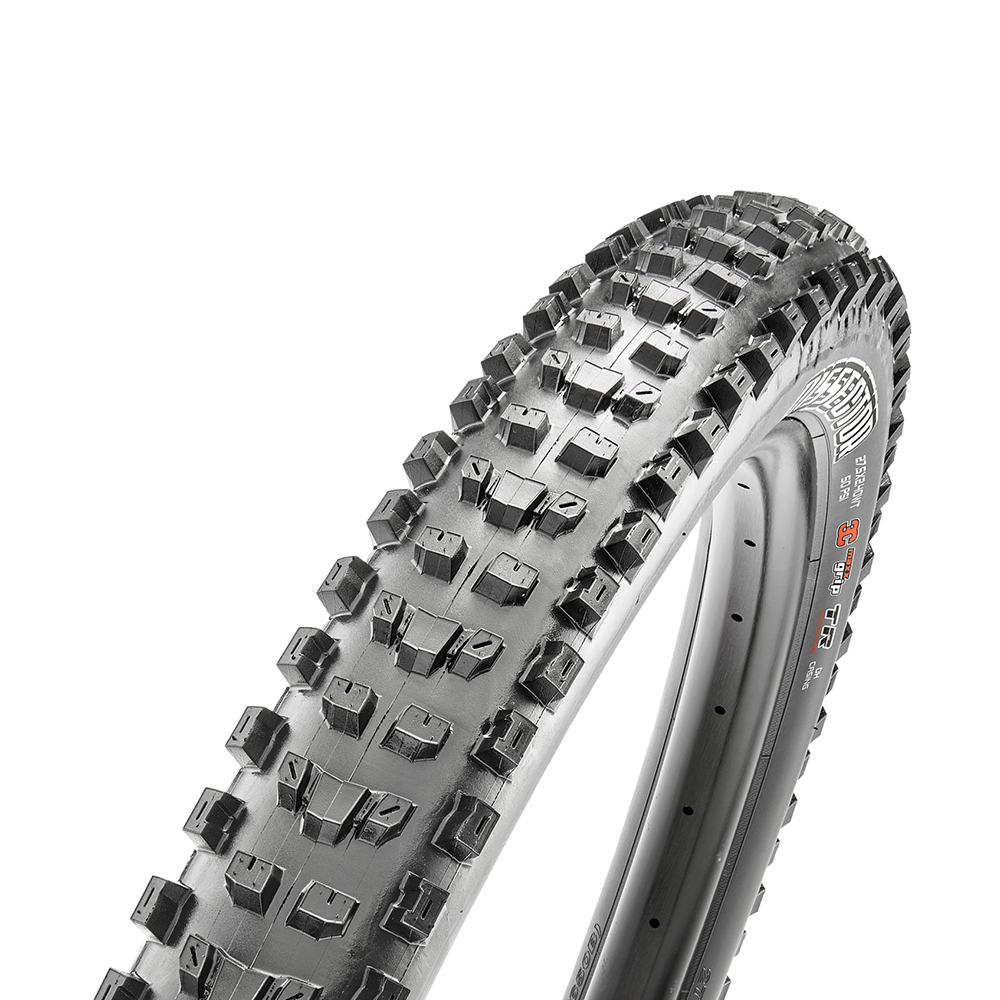
Best fast-rolling trail MTB tire
Fast and drifty but still feels damped and anchored.
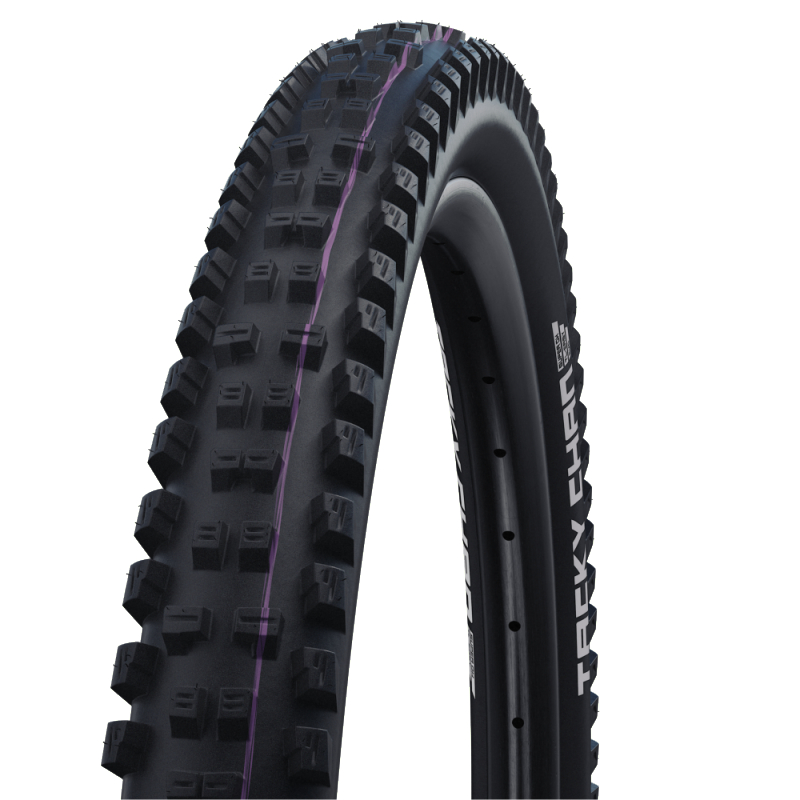
Best trail MTB tire for grip
Consistently grippy and predictable in almost all conditions.
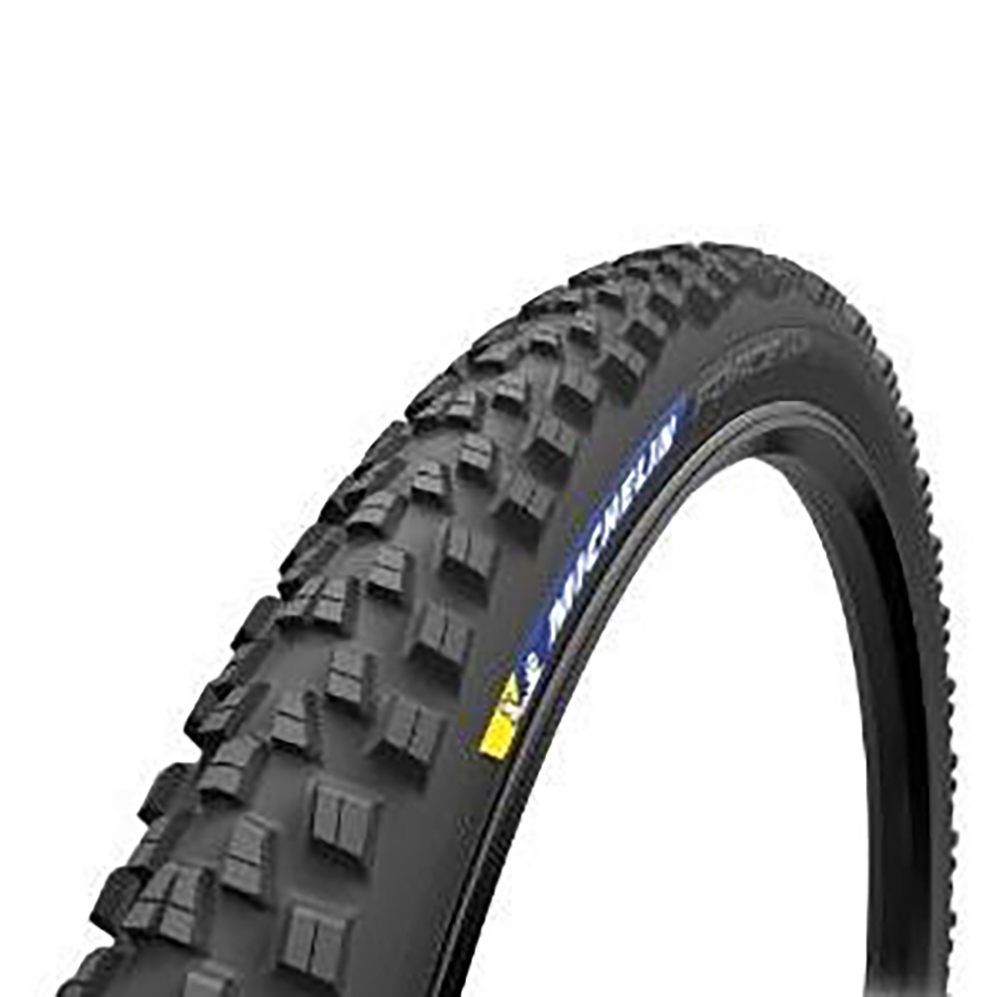
Best value trail MTB tire
Tough, durable, and great value tires, best for loose, dried situations.
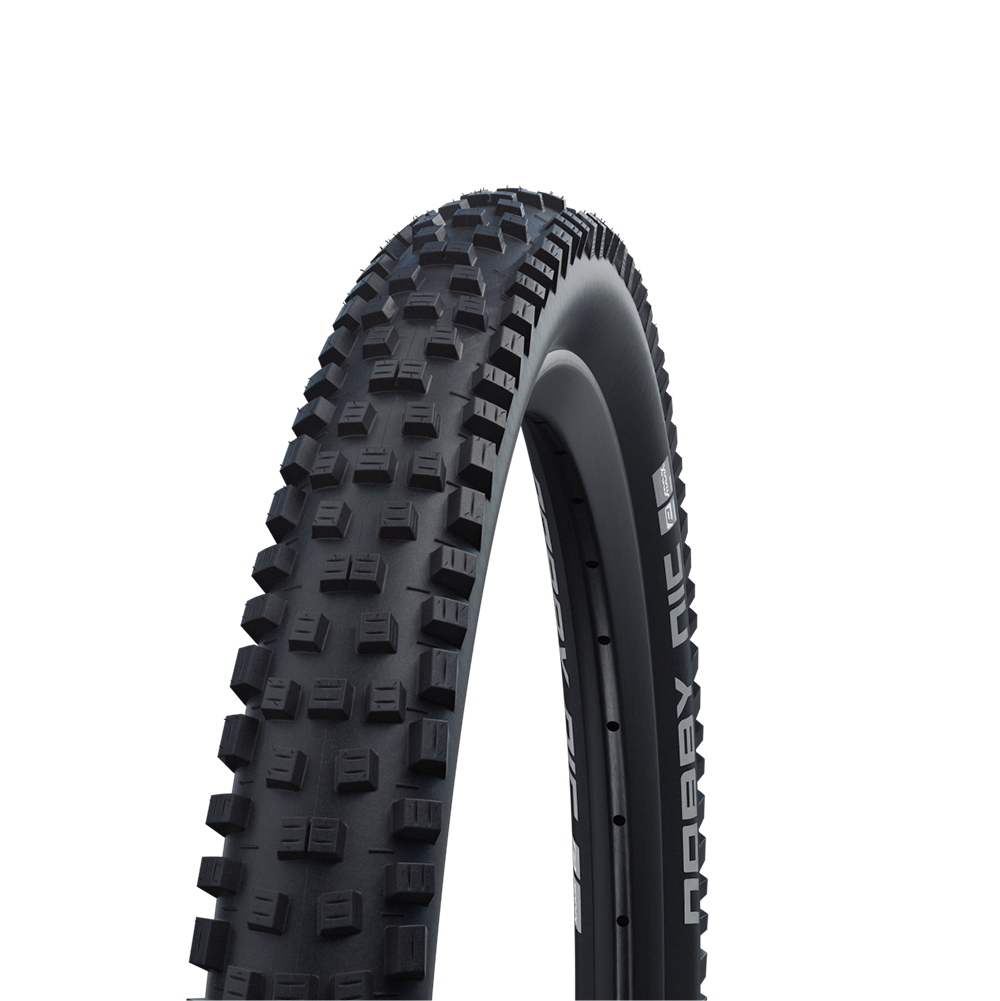
Best all-rounder trail MTB tire
Balances speed and grip to make an excellent all-rounder.
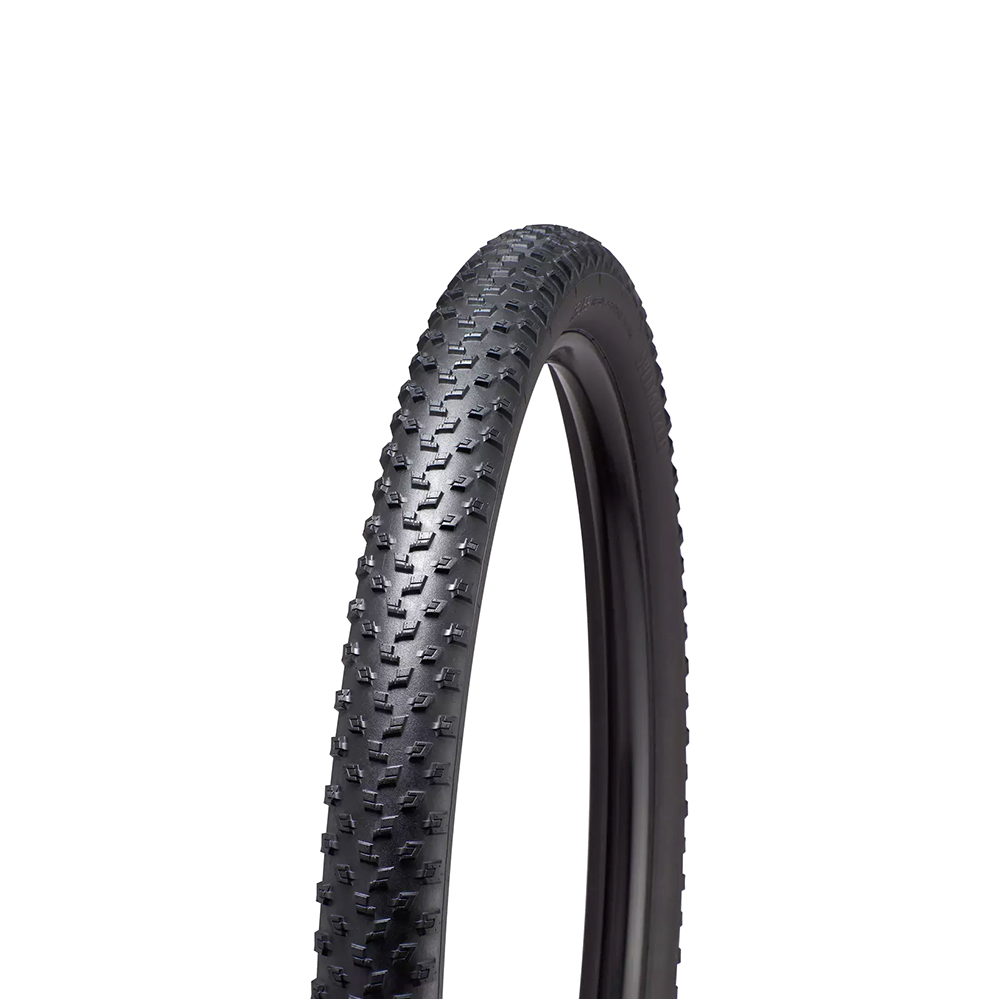
See the next 9 mountain bike tires ↓
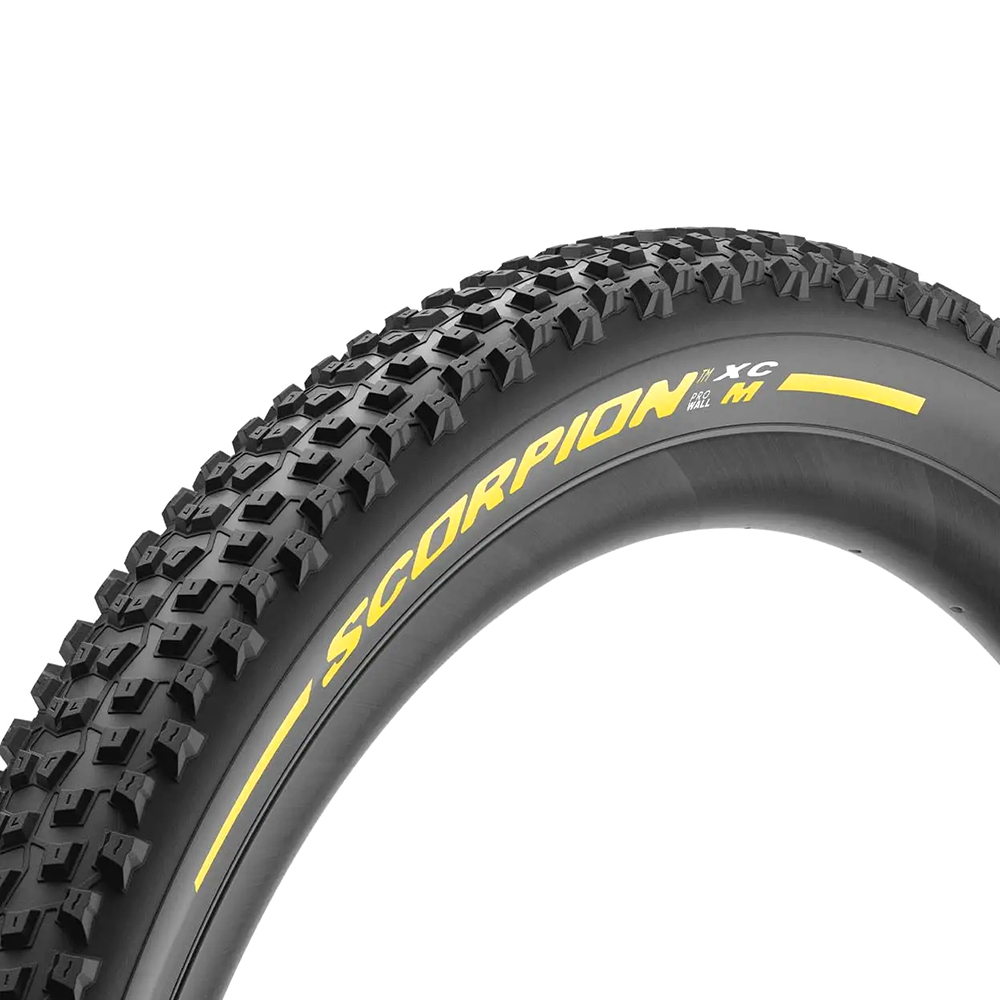
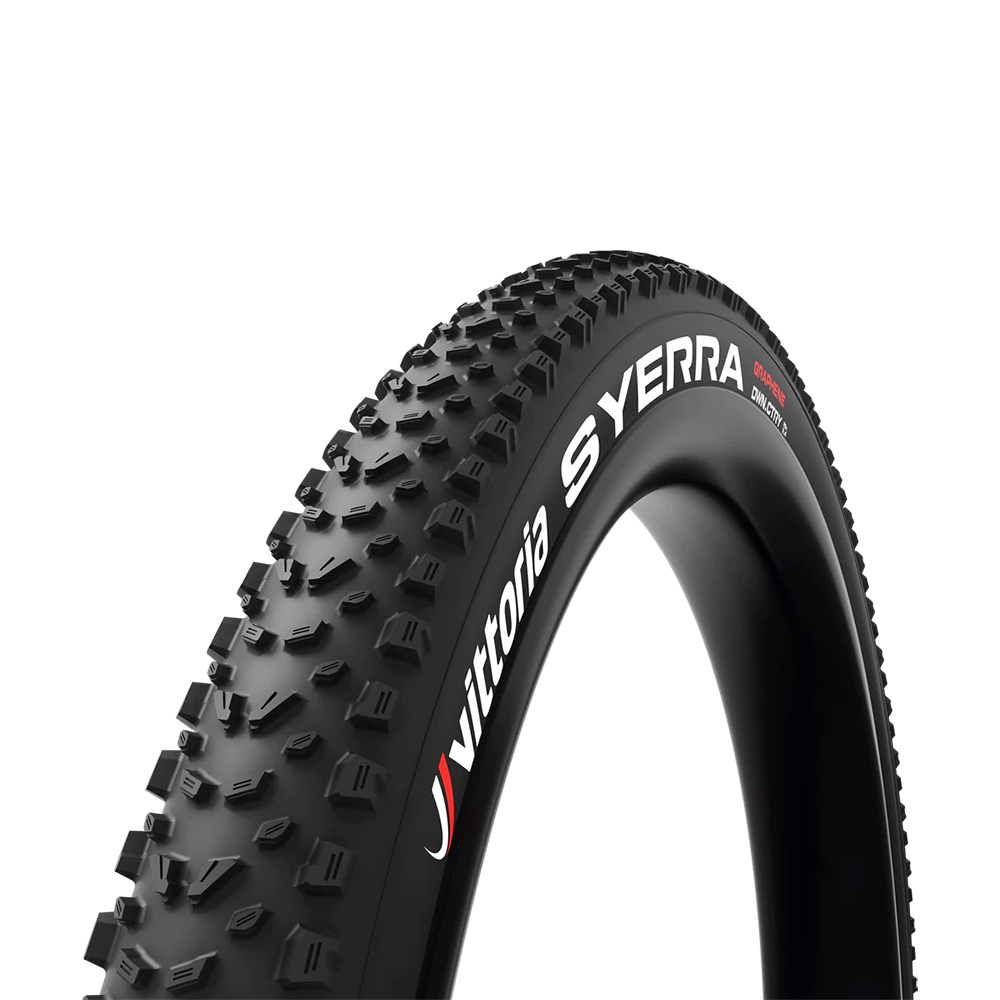
Best downcountry MTB tire
Tough, distance-durable, and stays efficient in most conditions.
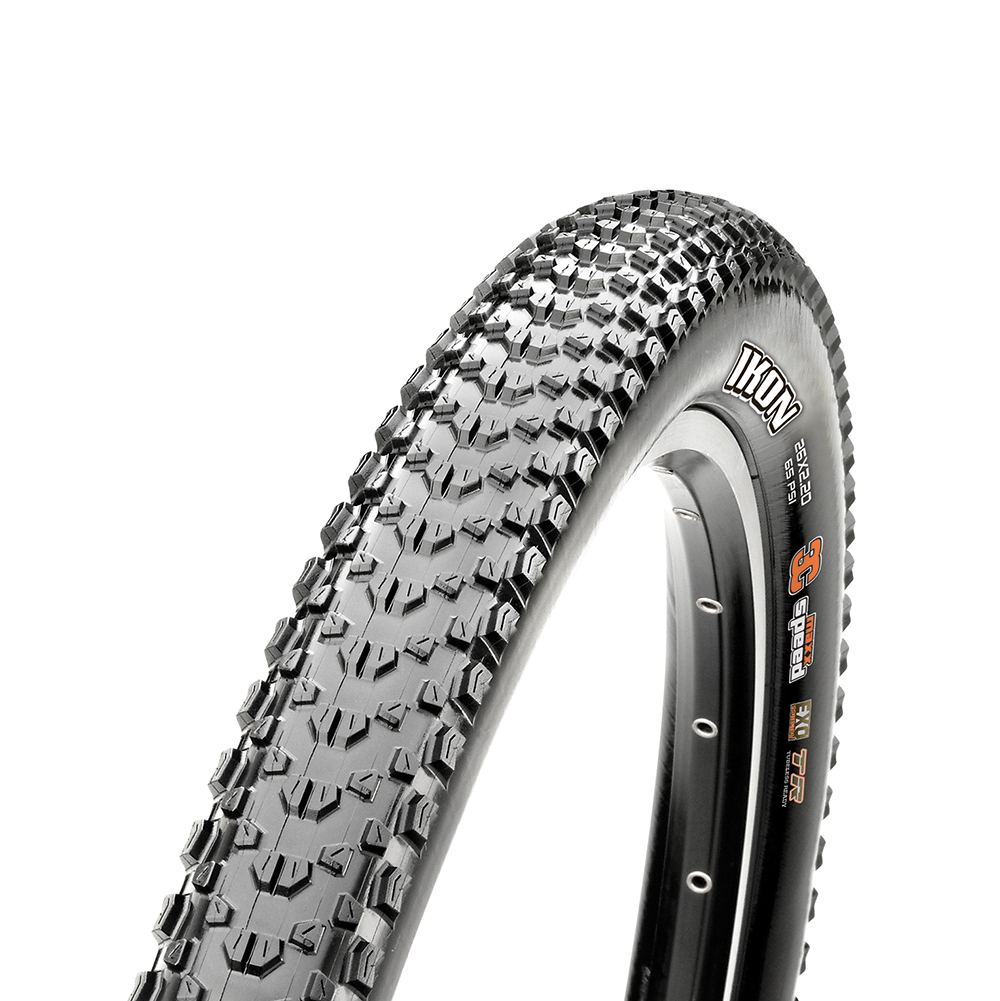
Best versatile XC MTB tire
Grippy, fast-rolling, and comfortable tire that's pretty tough.
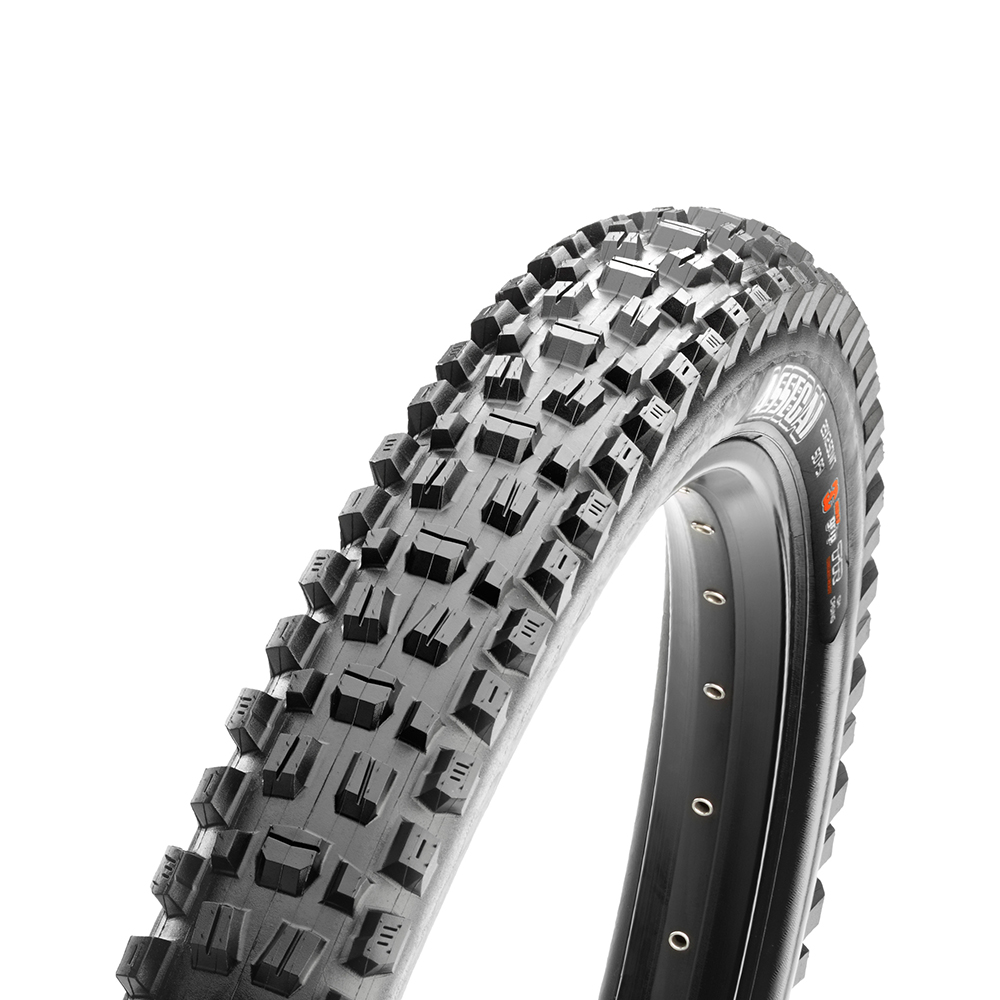
Best gravity MTB tire overall
An aggressive tire with trustworthy grip and control in the toughest conditions.
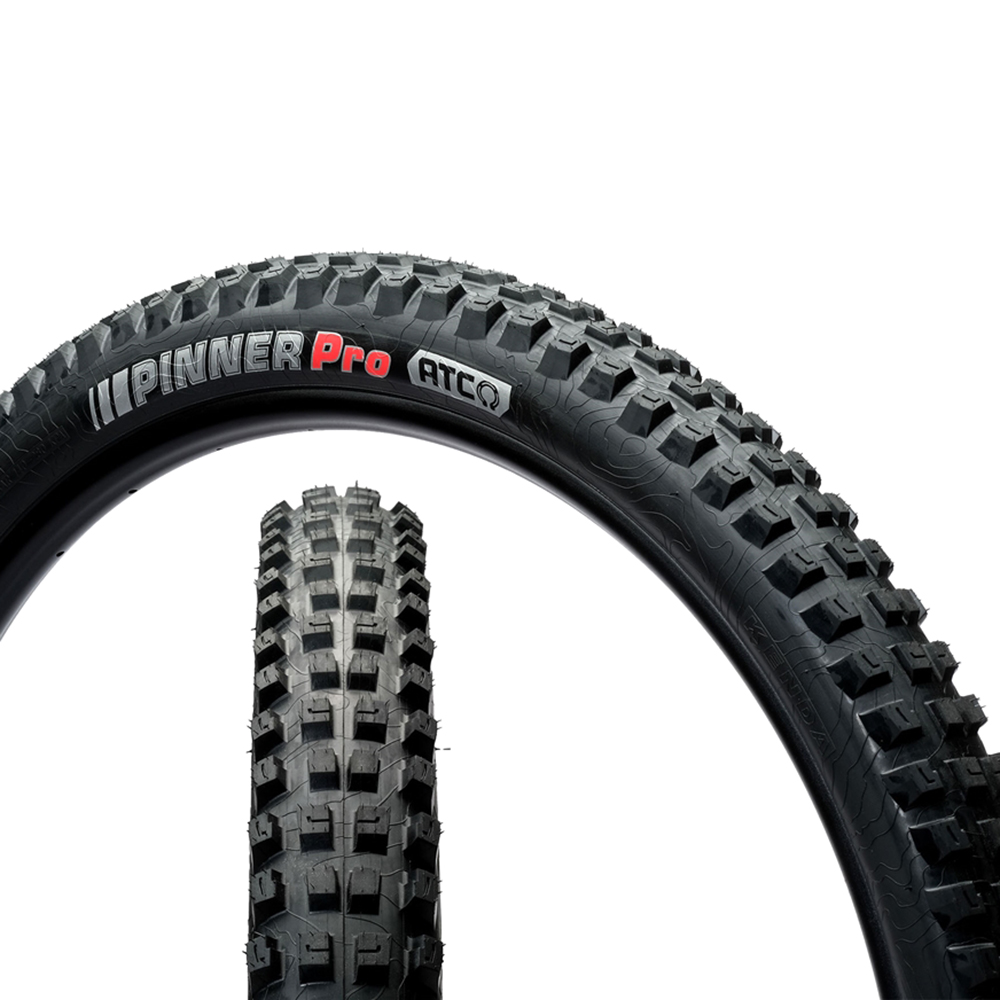
Best value gravity MTB tire
Solid, durable, and superbly grippy tire at a great price.
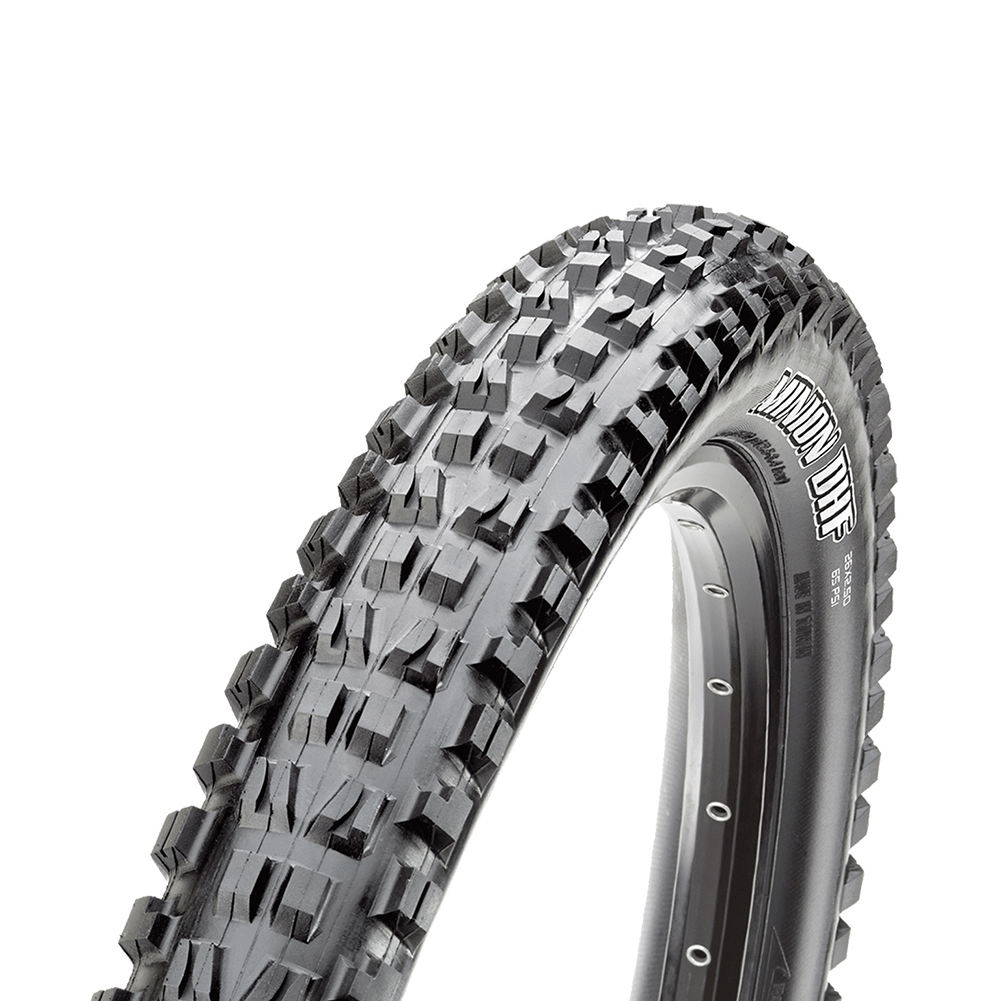
Best gravity MTB tire for cornering
Superb all-rounder with excellent cornering grip in all conditions.
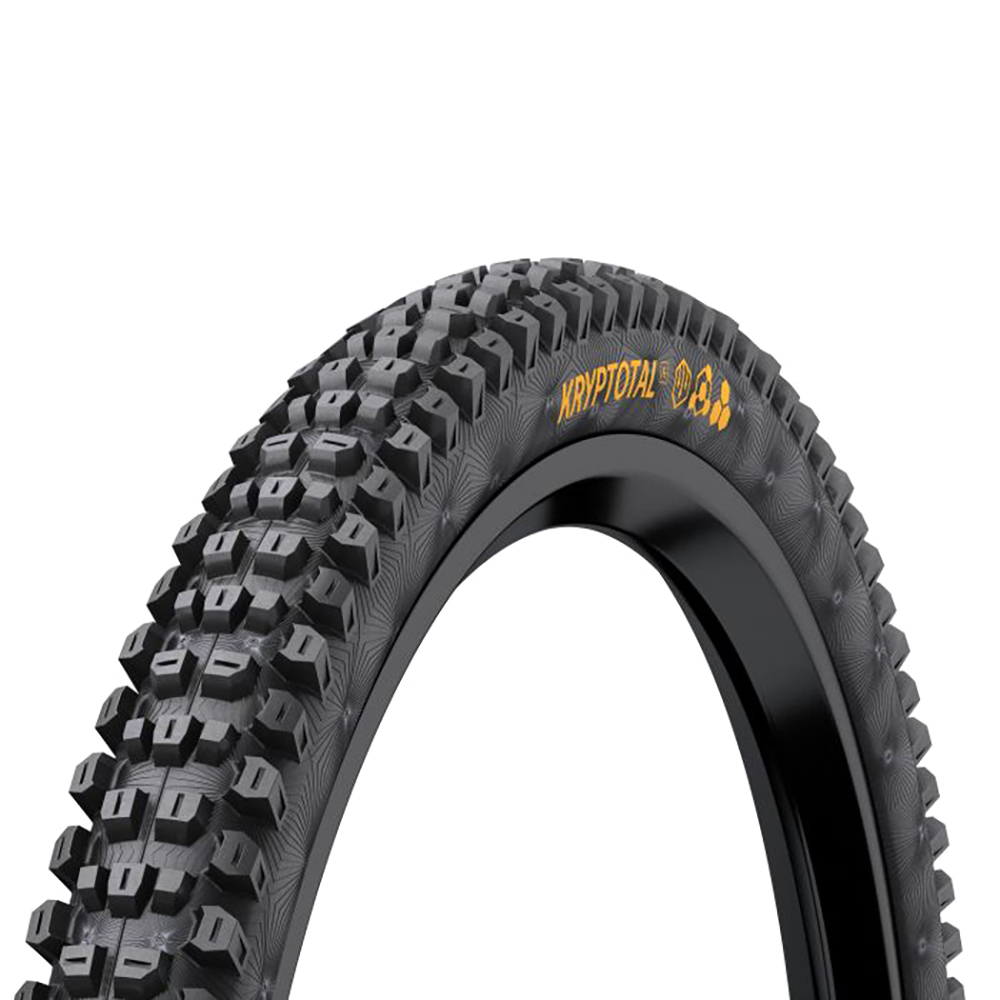
Best gravity MTB tire for stability
Predictable grip and excellent stability even at low pressures.
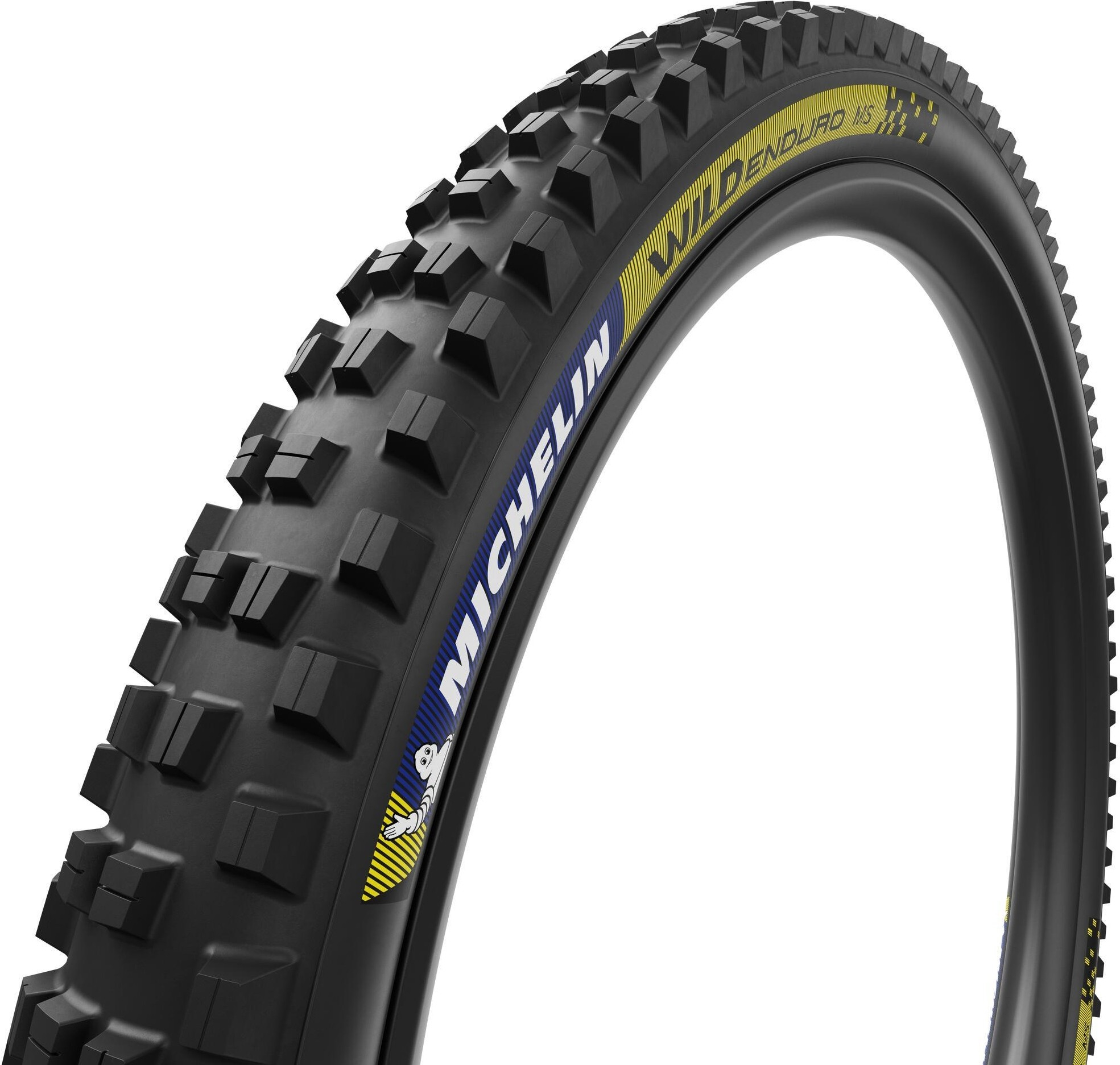
Best gravity MTB front tire
An excellent front tire option with loads of grip in all conditions.
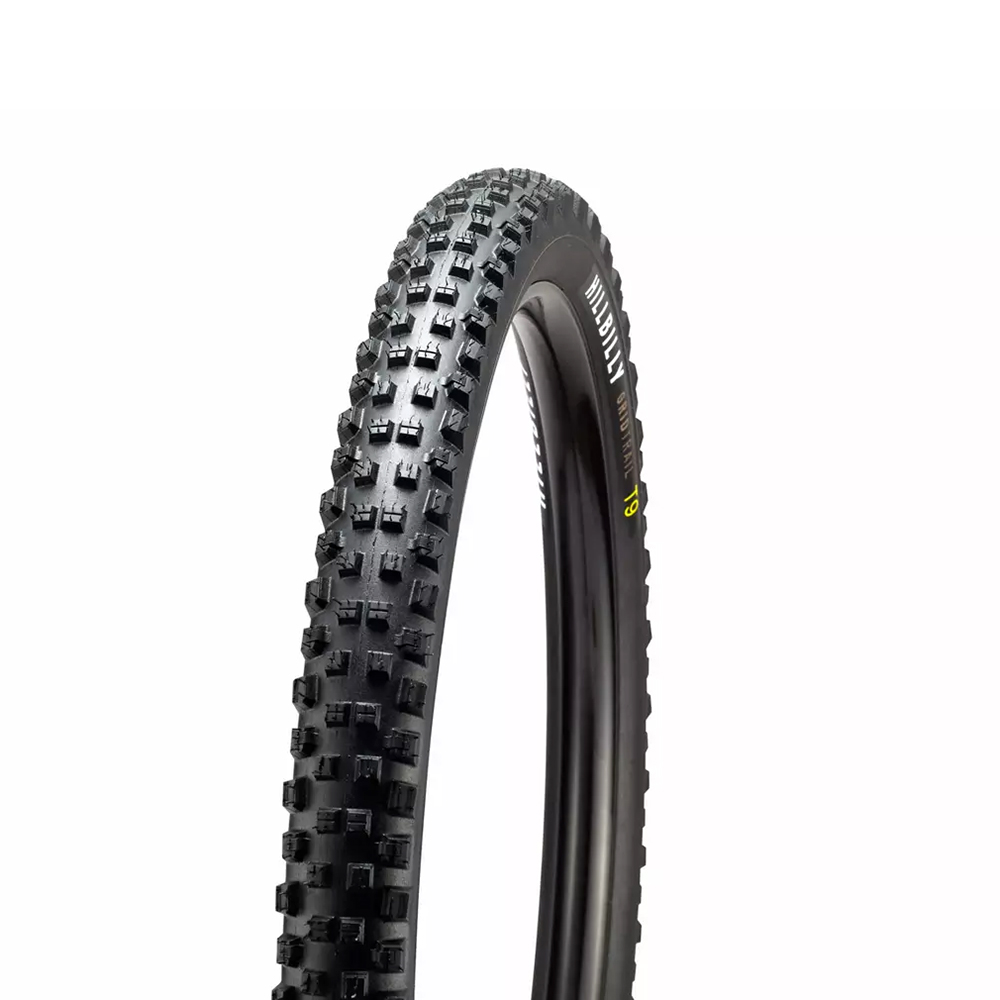
Best gravity tire for winter
Provides unrivaled levels of grip in wet, wintry conditions.
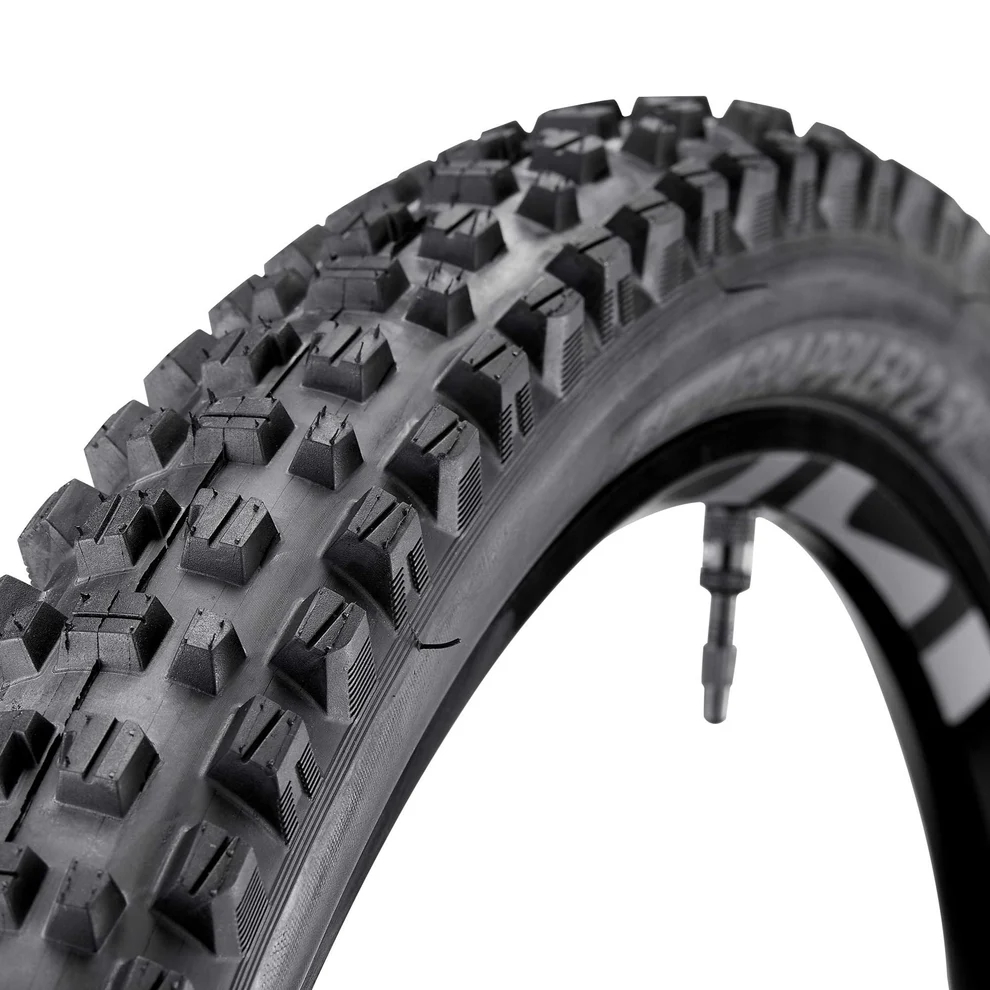
Best gravity MTB tire for durability
Tough casings and grippy yet long-lasting tread compound make the Grappler a great fit-and-forget tire.
Best mountain bike tires for trail
Why trust BikePerfect
1. Best trail overall
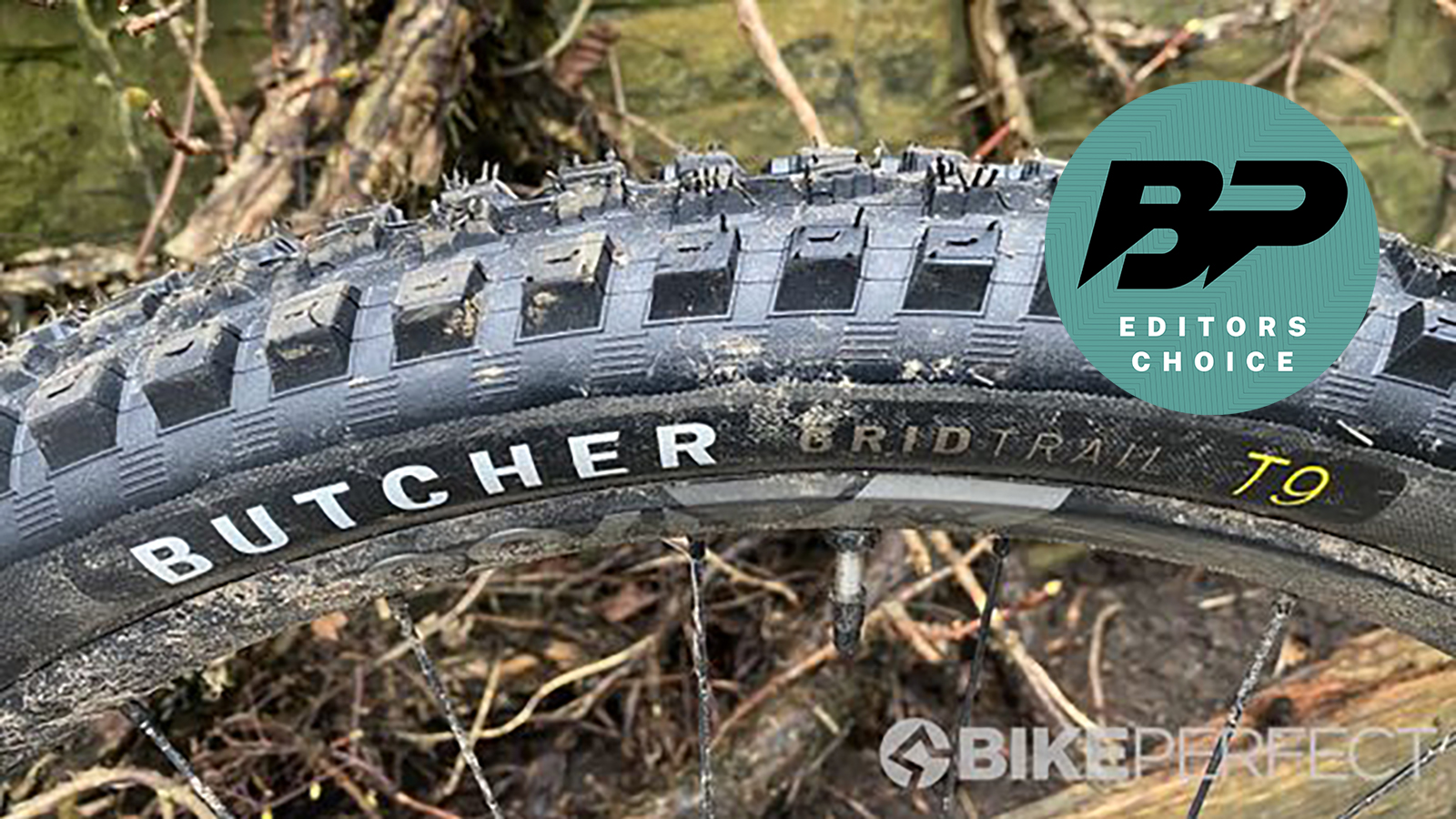
Specifications
Reasons to buy
Reasons to avoid
Specialized has completely reworked its rubber compound on the Butcher and come up with the T9 Grid Trail. Long story short, the T9 uses a slow rebound damping compound to provide predictable grip and handling in an impressive range of conditions.
What does all of that mean on the trail? We found them to be extremely grippy and handle damping really well. The slow rebound almost feels as if we had dropped a couple of clicks of rebound/fitted a damper upgrade and gave the ride a heavily damped feel that's well suited to fast riding as it is to slow tech. The damped characteristic could dull the springy or poppy characteristics of a bike but start slamming through rocky or rooty sections and the high levels of grip, control, and confidence become clear.
They aren't too slow-rolling and not overly heavy either so while they may suck some of the high-energy ride feel from your bike, we didn't find they punished us too much on climbs or flat sections.
Not only that but already keen global pricing has been dropped further in the UK recently too, making them a total bargain if you spell tire with a 'y'.
Read our full review to find out why the Specialized Butcher is the best trail tire on the market.
2. Best fast-rolling trail
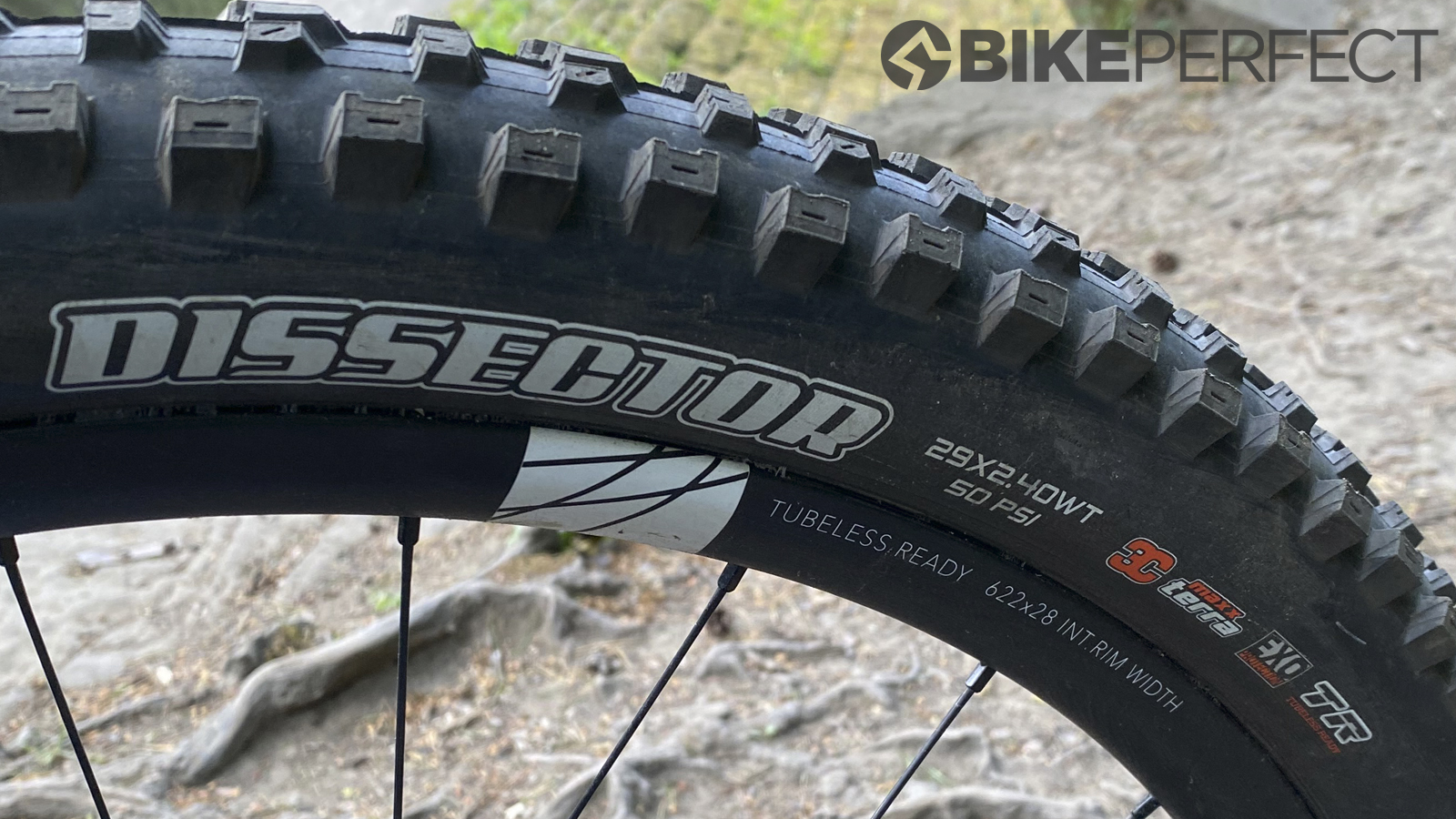
Specifications
Reasons to buy
Reasons to avoid
Maxxis is the generally accepted performance benchmark for aggro and trail tires and the Dissector sits very neatly into that crossover point. It’s lighter than a Minion DHF or DHR in a similar size and the ramped tread rolls faster. It's a good choice to add immediate pep to pedaling without having to resort to a lighter weight and more damage-prone trail/XC Rekon, Forekaster, or Aggressor Maxxis tires too.
The tire was designed by Australian Downhill racer Troy Brosnan so it's best suited to dry and dust conditions. The tire has a reassuring damped and stuck feel on the trail. If you have ridden a High Roller you will definitely recognize the jump between the center tread to the shoulders which can be a little unsettling. Make the leap of traction faith though and the cornering grip is decent with the tire gently initiating a drift rather than a dramatic snap out.
The tire can be used both front and rear. As a rear tire, it adds more grip and control than a semi-slick and still rolls nicely. As a front tire, it's great for downcountry bikes or light trail riding.
Check out our full thoughts on the Maxxis Dissector or browse the entire Maxxis MTB tires range.
3. Best trail for grip
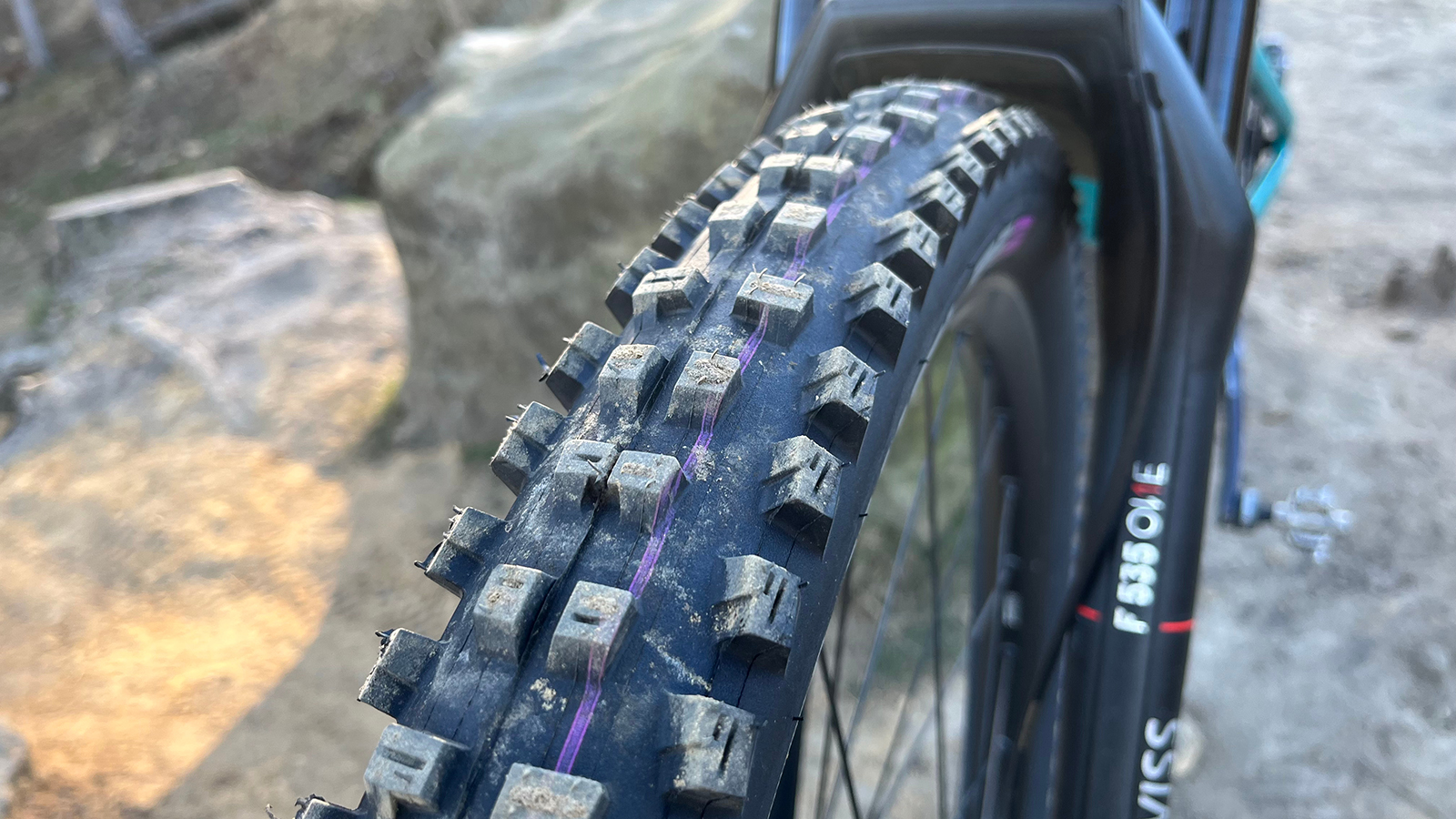
Specifications
Reasons to buy
Reasons to avoid
Schwalbe developed the Tacky Chan with the help of Amaury Pierron and his teammates on the Commencal Downhill team. Initially, the Tacky Chan was solely focused on downhill riding but now Schwalbe has followed up with enduro and trail options.
We tested the Schwalbe Tacky Chan in its trail guise with the Ultra Soft compound and found that it offered loads of traction in a wide range of conditions. The precise and predictable nature of the tire means you can aggressively attack corners and off-camber sections, leveraging the stout side knobs and slightly squared profile.
Chamfered center lugs mean the Tacky Chan rolls surprisingly quick for a meaty tread and although the sidewalls offer enough feedback to communicate grip levels, they aren't going to succumb when faced with rocky trails.
For more details, check out our full review of the Schwalbe Tacky Chan Super Trail.
4. Best value trail
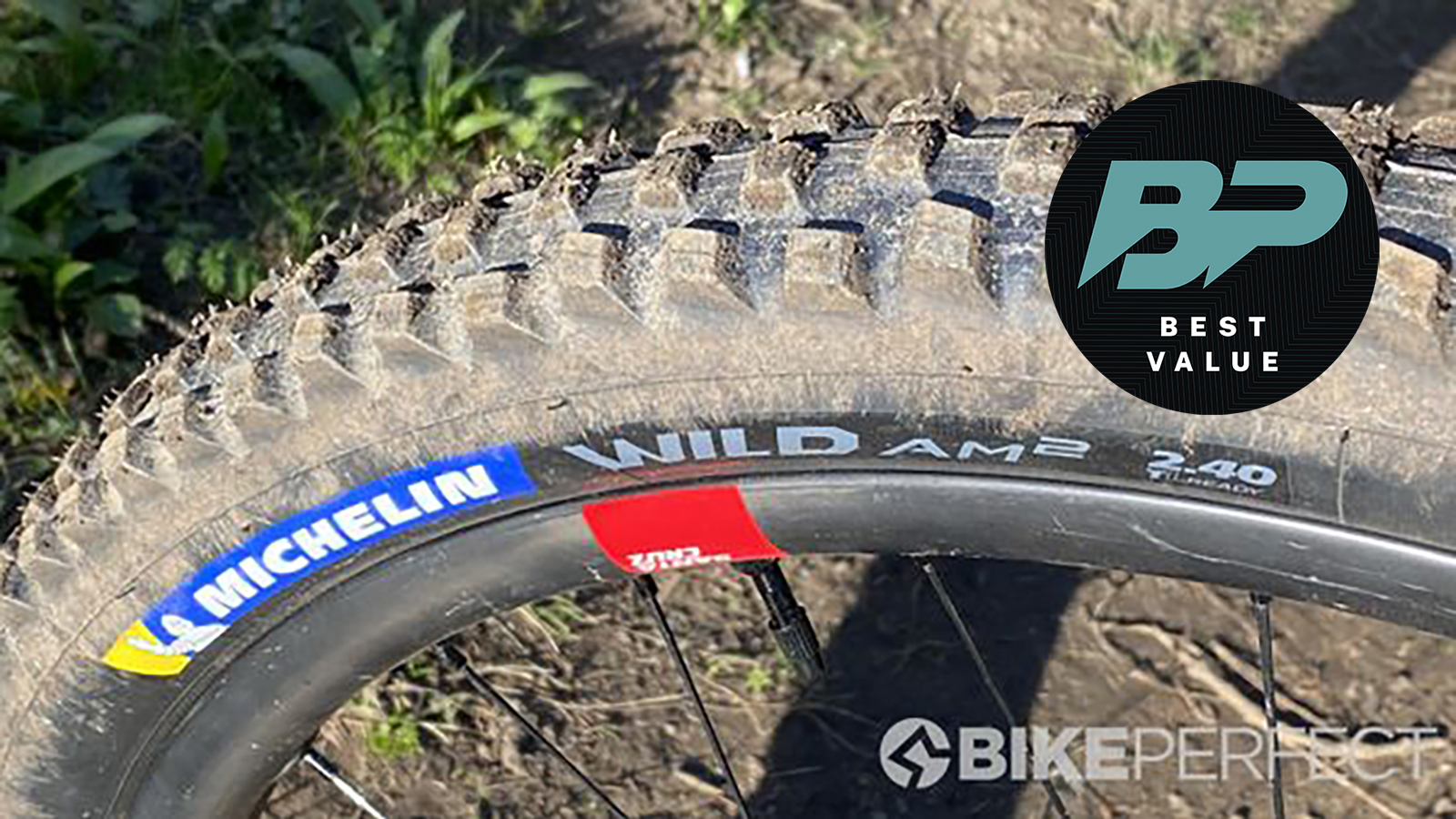
Specifications
Reasons to buy
Reasons to avoid
The Wild and Force AM2 pairing is Michelin's latest offering. AM stands for All-Mountain, as opposed to the brand's enduro category, so that means it's meant for rigorous trail riding rather than super aggressive enduro riding.
The tires are front and rear-specific with the Wild AM2 offering better traction and the Force AM2 rear putting higher priority on rolling speed. The downhill-evolved tread pattern of the Wild AM2 offers excellent straight-line control in soft or mixed conditions although the shoulder knobs aren't as aggressive as some of the other aggro trail/enduro tires on this list. The Force AM2 features a more condensed tread pattern for better rolling speeds although it still does a good job of holding the ground in a straight line when needed. The shoulders are the same as the Wild AM2 so we found they tended to break free a little more often than other tires we have used.
While grip might not be able to compete with some of the best mountain bike tires, the Michelin's have proven to be a durable and long-lasting tire which only further boosts its super-competitive pricing. With the extra durability does come a little extra weight, it's also on the slimmer side as a 2.4in blows up to a width that's more in line with 2.3-inches in our experience.
For more details, we have a full review of the Michelin Force and Wild AM2.
5. Best all-rounder trail
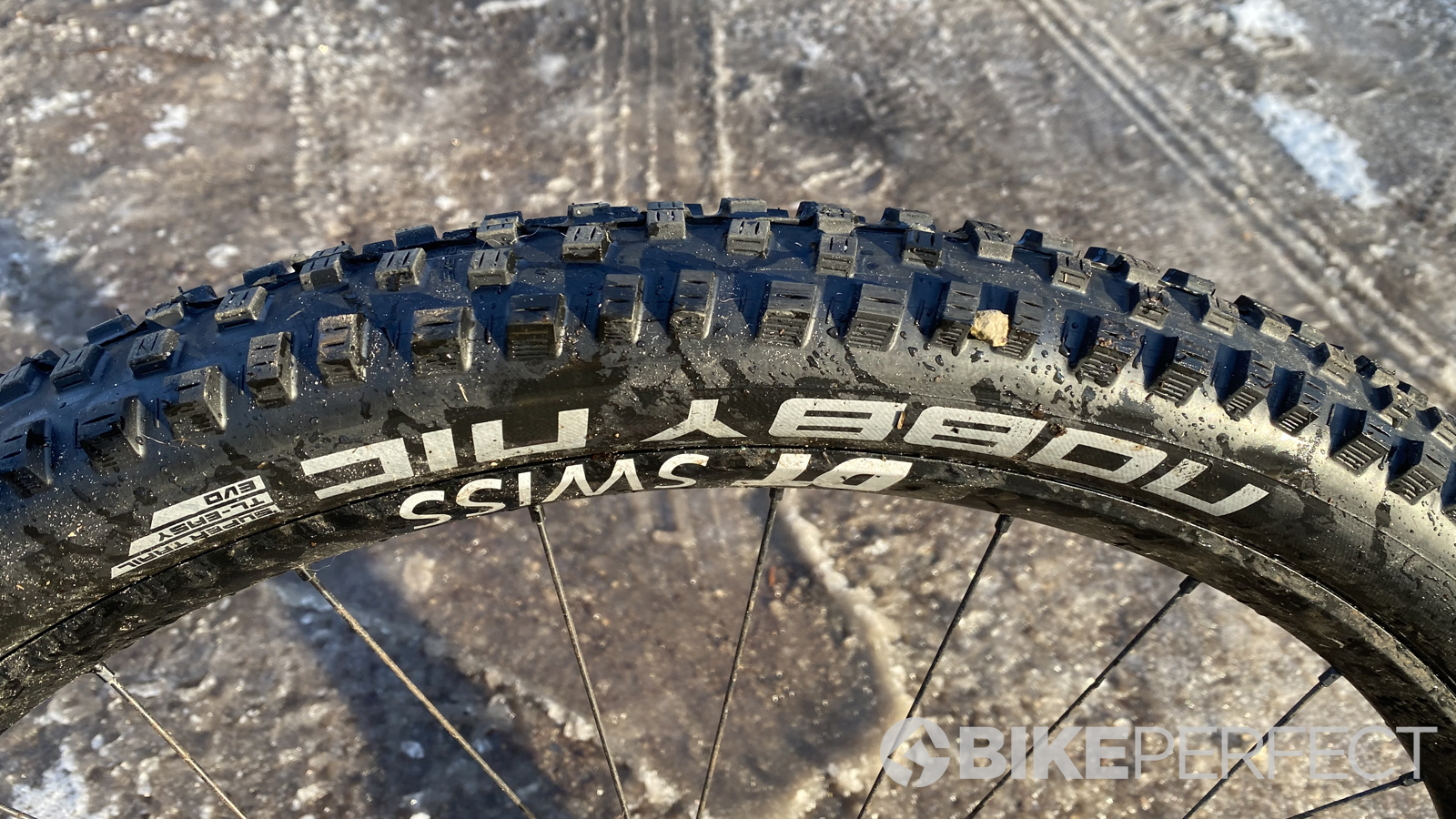
Specifications
Reasons to buy
Reasons to avoid
Schwalbe's Nobby Nic tire has had a bit of a shaky past. Previously overshadowed by Schwalbe's other tires, the latest Nobby Nic has had a 'Super Trail' makeover and is finally the performance trail tire it was destined to be.
A new tread maintains the fast-rolling speed of the older tire but boosts grip across a wide range of conditions. The wide-spaced knobs offer useful traction in soft conditions and the spacing means it shakes off mud reasonably quickly too. If you are leaning towards grip, rather than lower rolling resistance, you may be better served by Schwalbe's own Magic Mary. That said the Nobby Nic is plenty grippy enough for the majority of trail work year-round.
Schwalbe does a bunch of different carcass options whether you're looking for something lighter weight or enduro tough too. You're also in luck if you are still rocking 26in wheels as the new Nobby Nic is still available in the smaller wheel size. RRP is on the pricier end although they will likely see some savings by the time it hits your shopping basket.
For more, check out our full Schwalbe Nobby Nic Super Trail review.
Best mountain bike tires for cross-country
6. Best XC overall
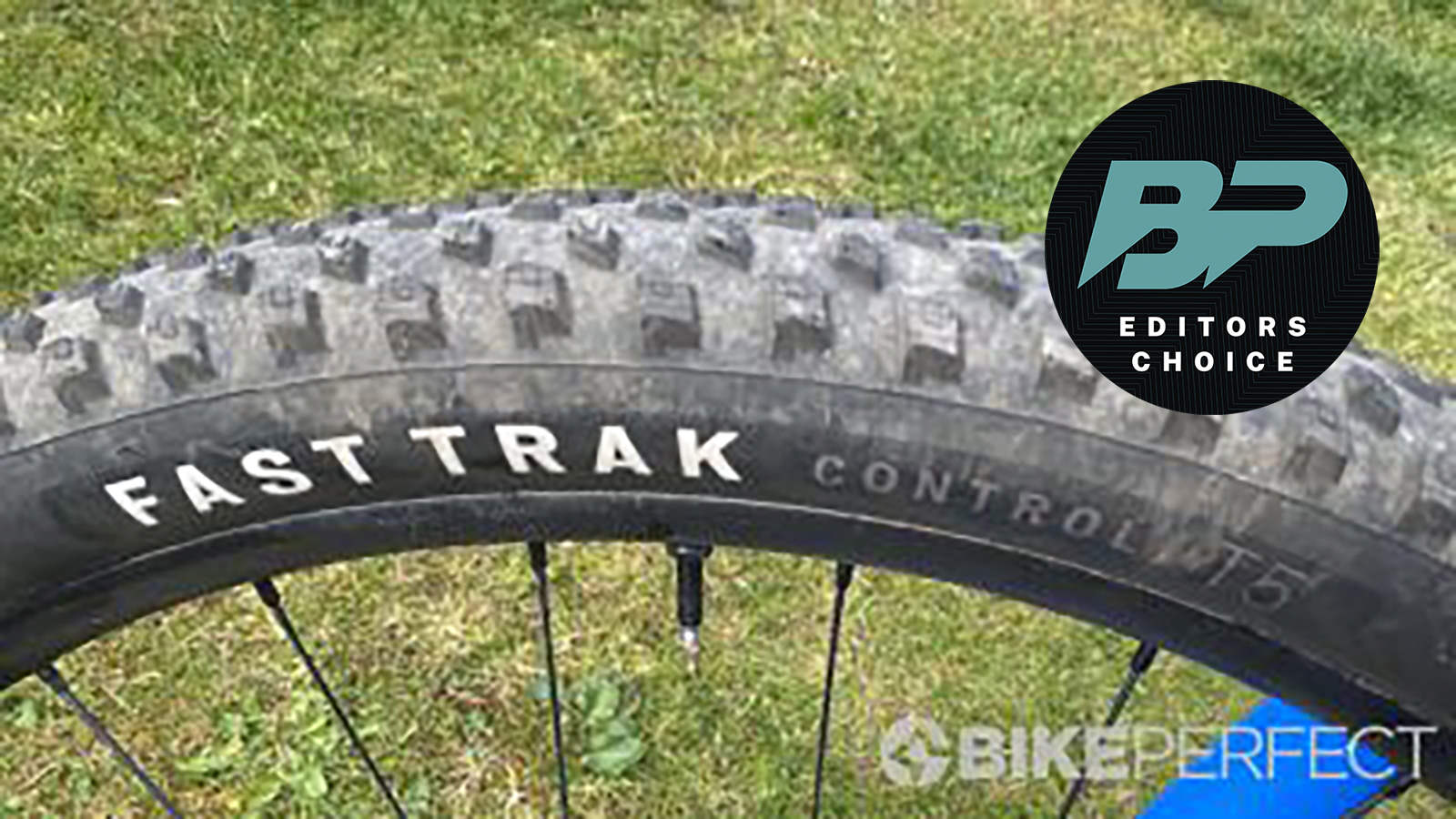
Specifications
Reasons to buy
Reasons to avoid
Specialized has an overhauled lineup of cross-country tires, and we're big fans. The Fast Trak is a great all-round option for XC riders, but with different treads and compounds, there's something for everyone from the casual rider to the pro racer.
The Fast Trak featured here uses an alternating diagonal centerline tread with small center depressions. There are also closely spaced intermediate and lower shoulder tread for cornering support.
There's a marked difference between the T7 and T5 rubber compounds that the Fast Trak is available in. The T7 compound is stickier so it works well as a front tire, while the fast-rolling attributes of the T5 are great for a rear tire. For the ultimate speed and grip combo, go with the S-Works version which isn't all that more expensive but drops around 100g. It uses a T5 center with a T7 shoulder for the best of both worlds.
Specialized UK has recently dropped pricing further, making it a total bargain for British racers.
Find out more about the Specialized Fast Trak as well as the Ground Control and Renegade cross-country/downcountry tires in our review.
7. Best value XC
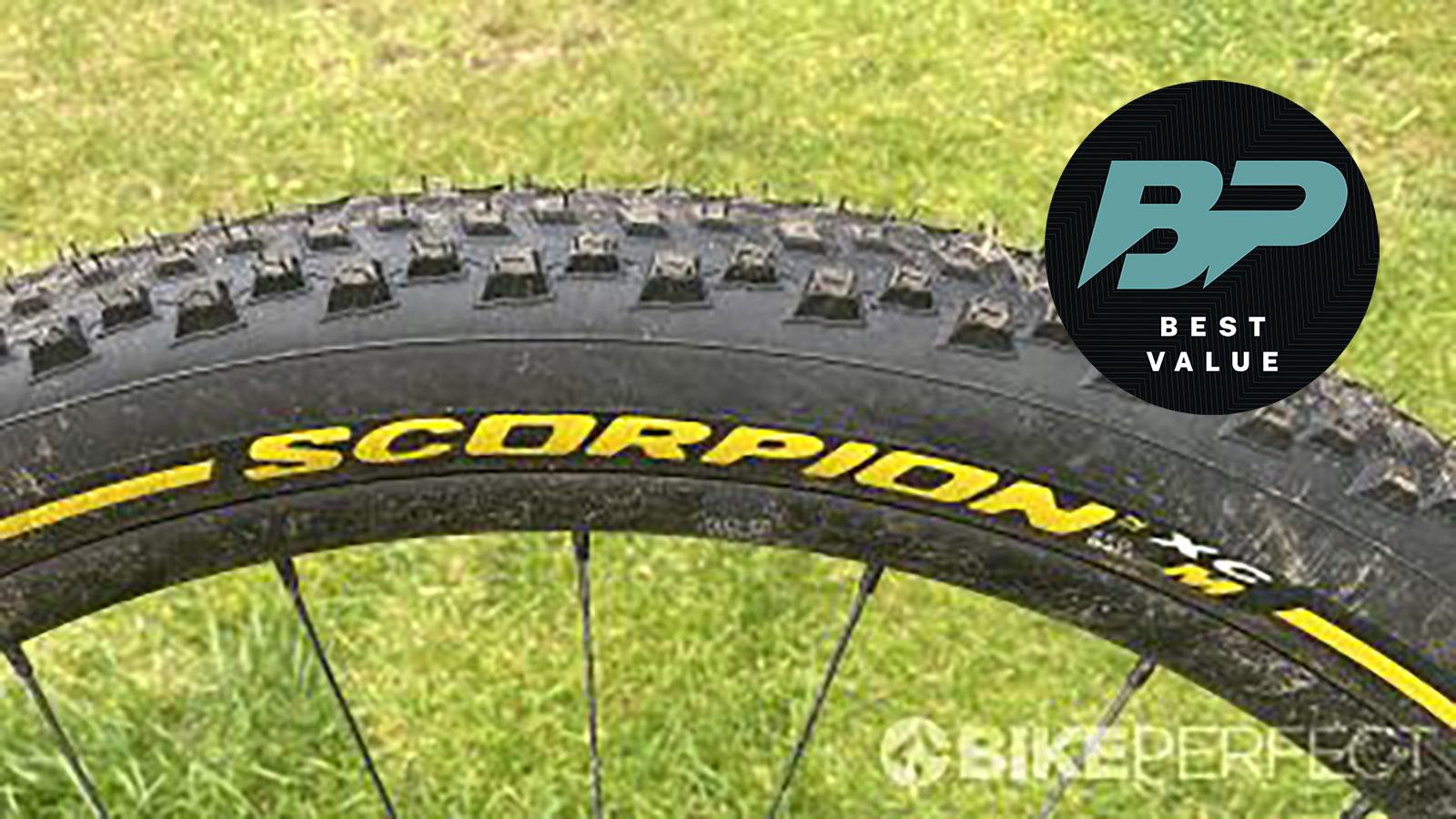
Specifications
Reasons to buy
Reasons to avoid
Pirelli's XC tire range comes in either a minimal Lite version or a reinforced sidewall version we tested called ProWALL. The XC M has a relatively larger tread compared to the XC H, which is the fastest-rolling cross-country tire the brand offers.
While the XC M doesn't offer as much support as a downcountry or trail tire, it still offers plenty of grip for classic fast-paced cross-country rides, especially if your terrain is rock-based man-made trails or summer singletrack. It seems to be tough as well, shrugging off plenty of rock scuffs and blunt edges while riding.
The XC H is fast-rolling but unless you ride on a baked hard trail network it's best left off the front and instead used as a speed booster on the rear. The tread may be very shallow but it grips far better than you would expect when pedaling.
The M and H are a good front-rear combination for summer riding in the UK/northern Europe so long as you don't lean into the corners too hard as the shoulders are fairly slimline. Good levels of toughness and durability also increase the value if you're covering a lot of miles day in and out, too.
Read more of our thoughts on these solid all-around XC tires in our full review of the Pirelli Scorpion XC M and H Team tires.
8. Best downcountry
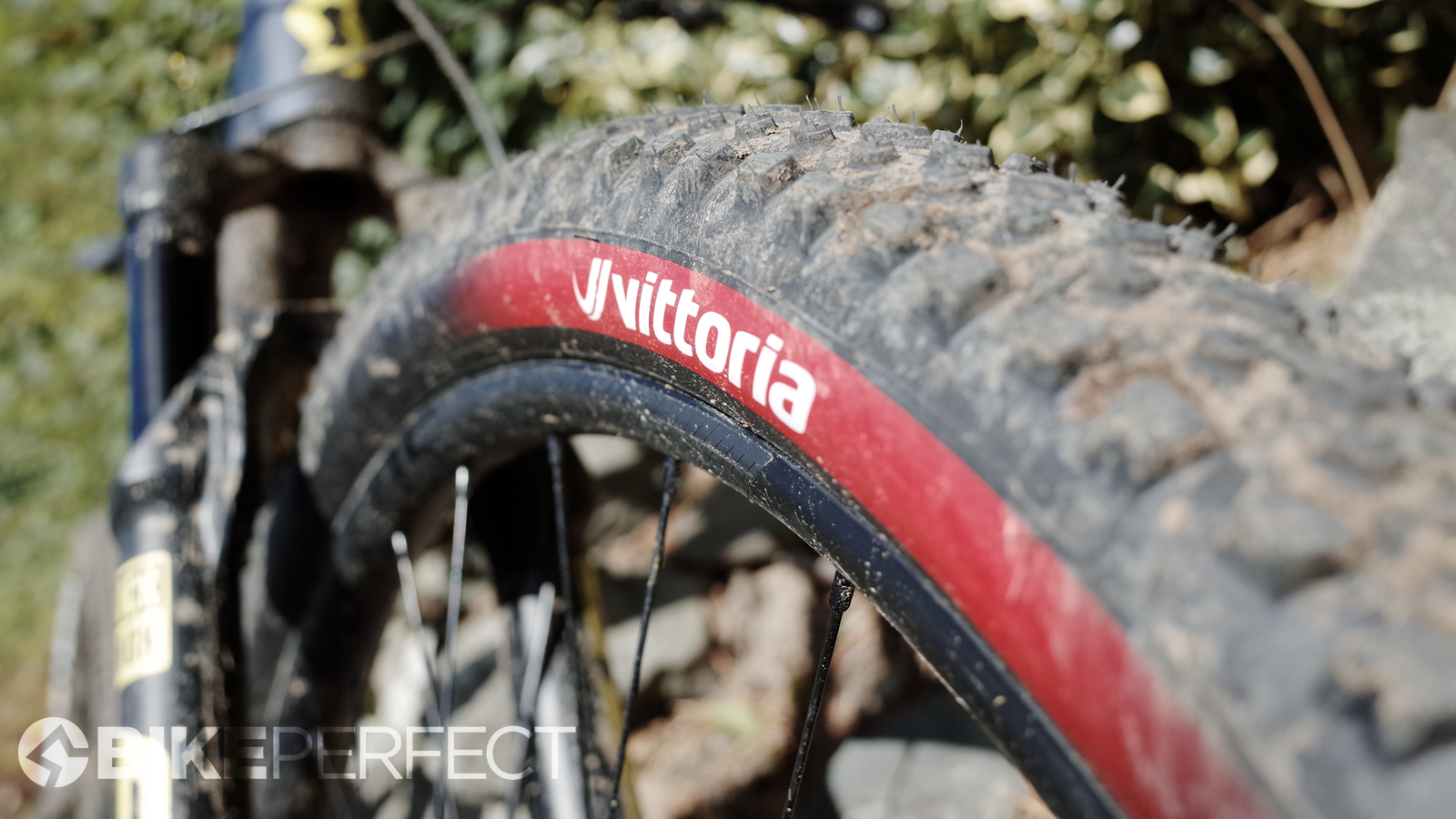
Specifications
Reasons to buy
Reasons to avoid
The Syerra is one of Vittoria's latest tires and the brand's entry into the downcountry market. They have even labeled it as a downcountry tire on the sidewall. And with downcountry's unique considerations compared to regular cross-country riding, Vittoria has developed a new construction, casing, and tread pattern for the Syerra.
A 60tpi nylon casing is combined with an Anti-Pinch flat insert which helps support the sidewall. The brand's Graphene compound rubber is used, combining a fast-rolling XC compound in the center with a more grippy and supportive trail compound on the sides. The open tread uses a fast-rolling center section with more aggressive shoulders to give a good balance of grip and speed.
The tire rolls fast on flat sections compared to trail-orientated options as well as on climbs and rolling terrain. A wider profile and more aggressive tread help with grip and cornering support compared to a standard cross-country tire too. The Syerra is best in dry, intermediate, or loamy conditions; maybe choose something different if you regularly ride wet rocks and roots. They are certainly lean more to cross-country but despite being much lighter than the trail tires around they don't seem to sacrifice rock and pinch-flat protection.
Check out our full Vittoria Syerra review for more info.
9. Best versatile XC
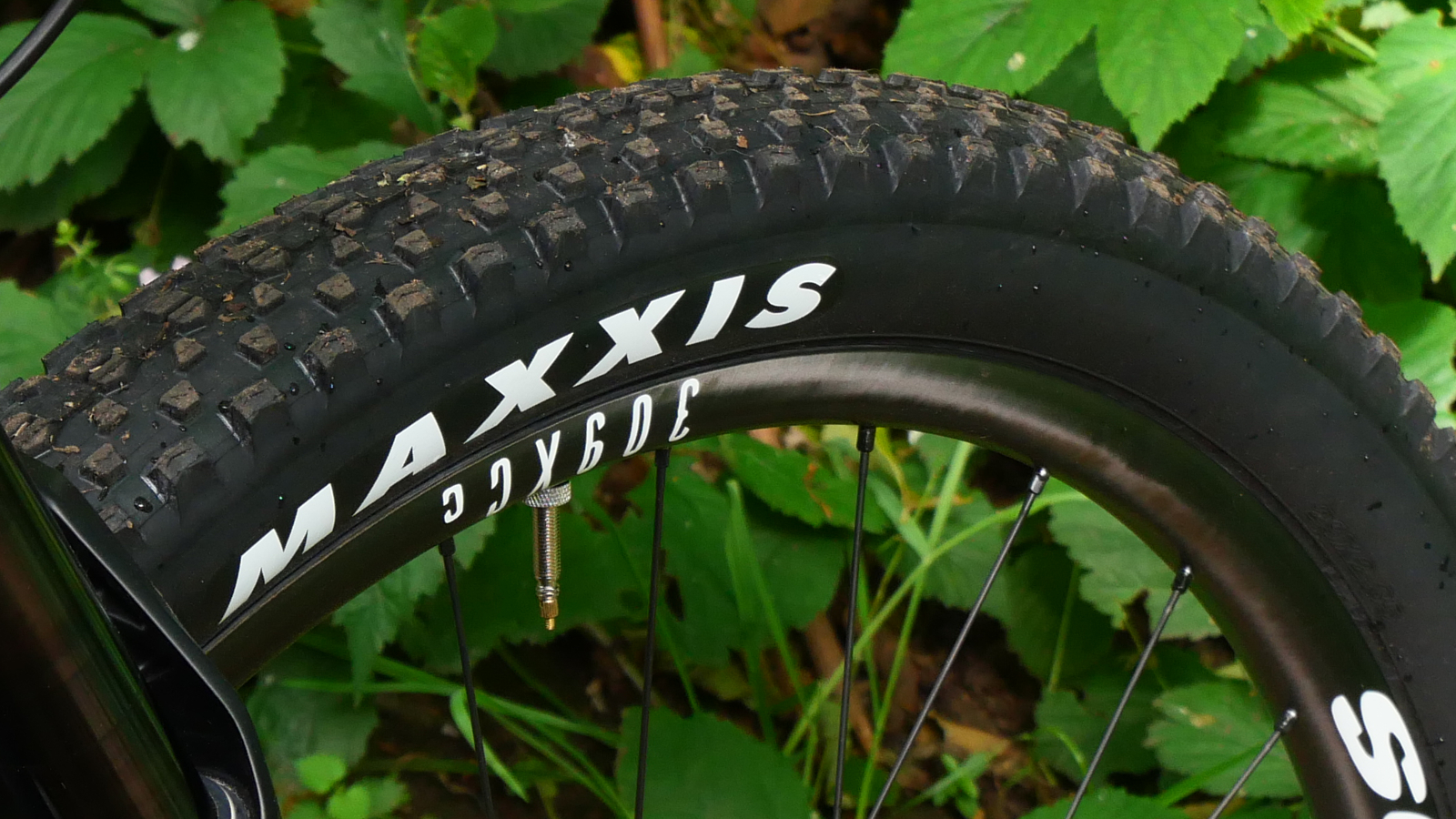
Maxxis Ikon
Specifications
Reasons to buy
Reasons to avoid
The Ikon is a grippy, fast-rolling, and comfortable cross-country tire. The tread pattern is pretty shallow and heavily chamfered to help rolling speed however the grip is still impressive considering such unassuming knobbles. In fact, when riding them in fast dry conditions it was very easy to get carried away and begin barreling down trails with trail bike exuberance.
Luckily they are also fairly tough and despite some pinballing and loose rock, we rolled out the other side relatively unscathed. As with any cross-country tire, they are going to start to struggle when things become wet or greasy but the predictable tread pattern and good-sized footprint in the larger 2.35-inch size helps with trail adhesion.
Weight is on par rather than spectacular but this is often a trade-off for cross-country tires and they are on the pricier end, especially when compared to Specialized's range.
Best mountain bike tires for enduro and downhill
10. Best gravity overall
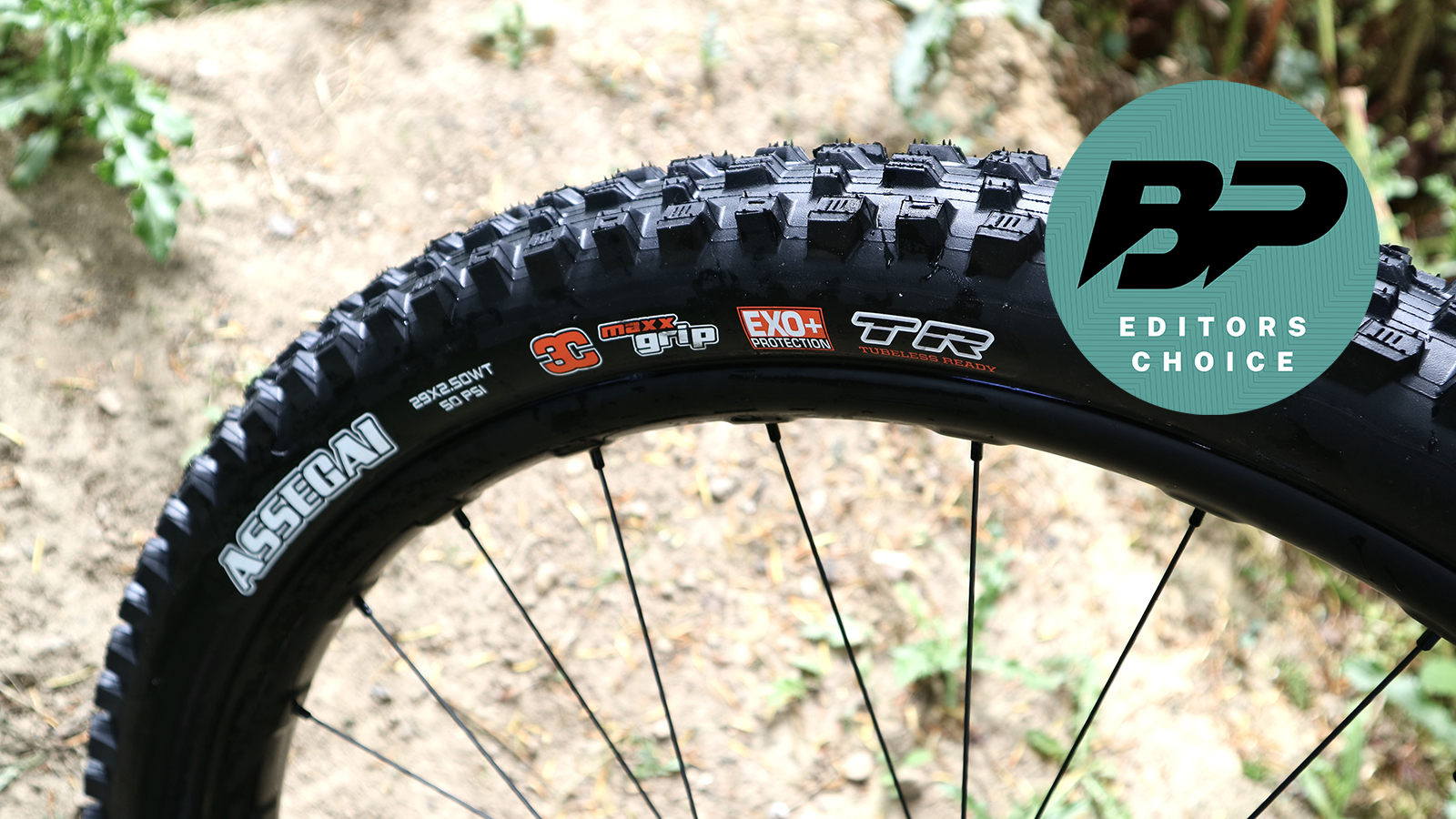
Specifications
Reasons to buy
Reasons to avoid
The Maxxis Assegai was developed by downhill racer Greg Minnaar, so naturally, it’s available with a reinforced Downhill or Double Down casing but there are lighter Exo and Exo+ versions available for trail riding too. The plus tire gets an extra layer of lightweight reinforced nylon called Silkshield. It adds weight but the nylon has a sort of latticework construction that adds casing stability (you can run lower pressure without the tire folding), thorn-type puncture protection, and pinch flat resistance, which is handy if you’re riding in the desert or rocky terrain.
Like most of the Maxxis flagship tires, the Assegai comes with either MaxxTerra (medium) or MaxxGrip (soft) triple rubber compounds. What you’re looking at here is a hard stable rubber base, a quick-rolling center section, and then a soft rubber on the edge for grip. MaxxGrip tires don’t keep their sharp edge for long but a good call is to run a MaxxGrip up front with the hardwearing MaxxTerra on the rear.
For trail use, the Assegai is one of the best all-rounders. It can handle hardpack and loose conditions as well as wet rocks and, with its open spacing, even deep mud. You can easily ride this tire throughout the year, and it works just as well on the front as on the rear.
For more, see our full Maxxis Assagai review.
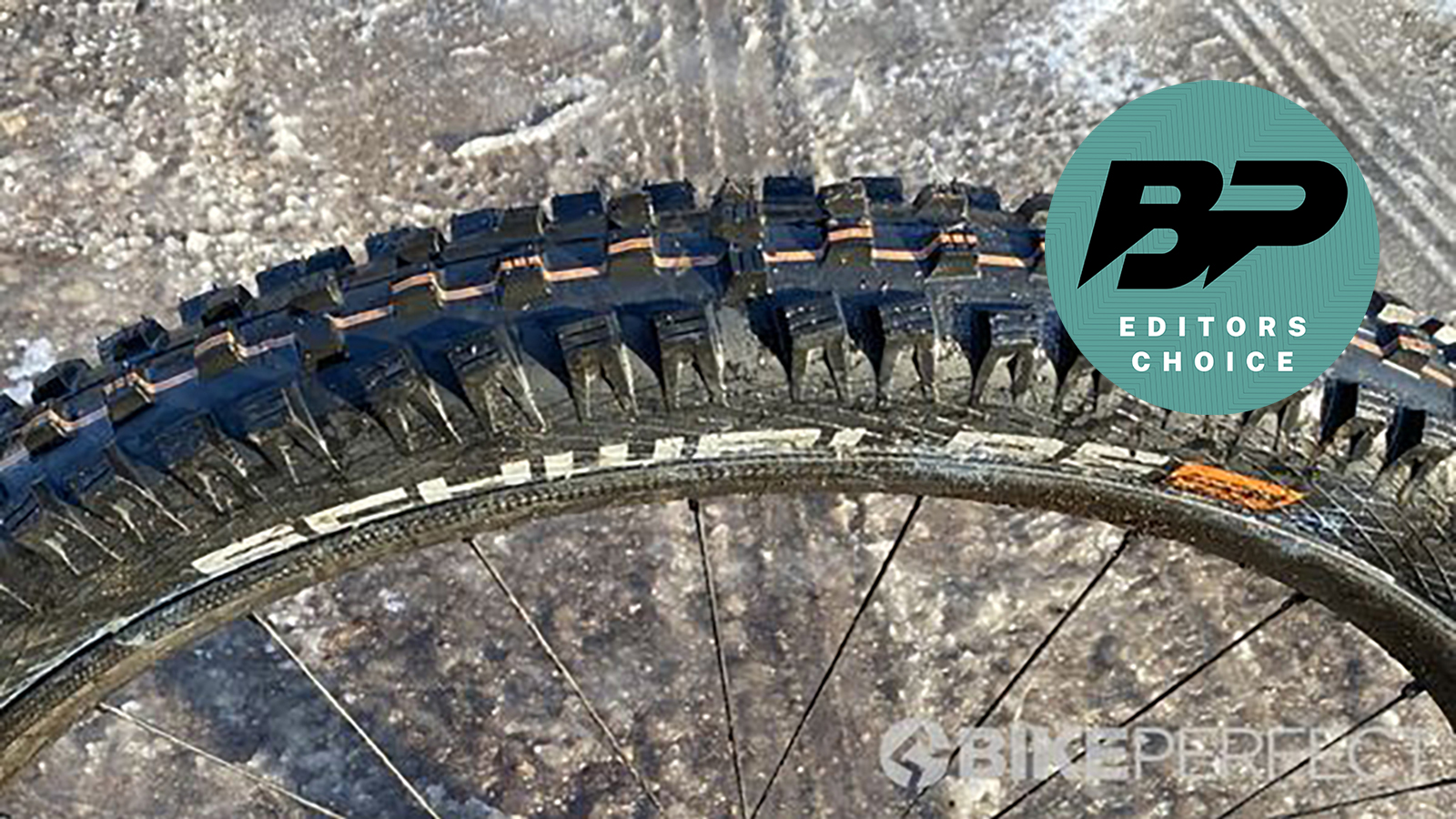
Specifications
Reasons to buy
Reasons to avoid
Schwalbe’s Magic Mary has changed very little since being introduced to the market. While the tread pattern remains the same, the compound received an update in 2018 in the form of Addix — a mixture Schwalbe claims has increased rolling speed and durability over its TrailStar predecessor.
In 2021 Schwalbe introduced a new class of carcasses for its tires called Super Trail. Super Trail is basically intended for enduro use, which admittedly is a little confusing especially as the older Magic Mary had a lighter trail carcass.
This Super Trail model gets increased protection, which also means that the weight has increased by about 300g. This tire is a good option for aggressive enduro riders who don't mind carrying a little extra weight uphill.
While the Magic Mary carries a little more heft now, it still has the same great ride feel and tread pattern for grip in a wide range of trail conditions. That means it's still a firm favorite of ours, albeit the ones that work with gravity rather than against it.
Find out why we rated it 4.5/5 stars by reading the Schwalbe Magic Mary Super Trail review. On a budget? We've found the best Schwalbe Magic Mary deals currently available on the internet.
11. Best value gravity
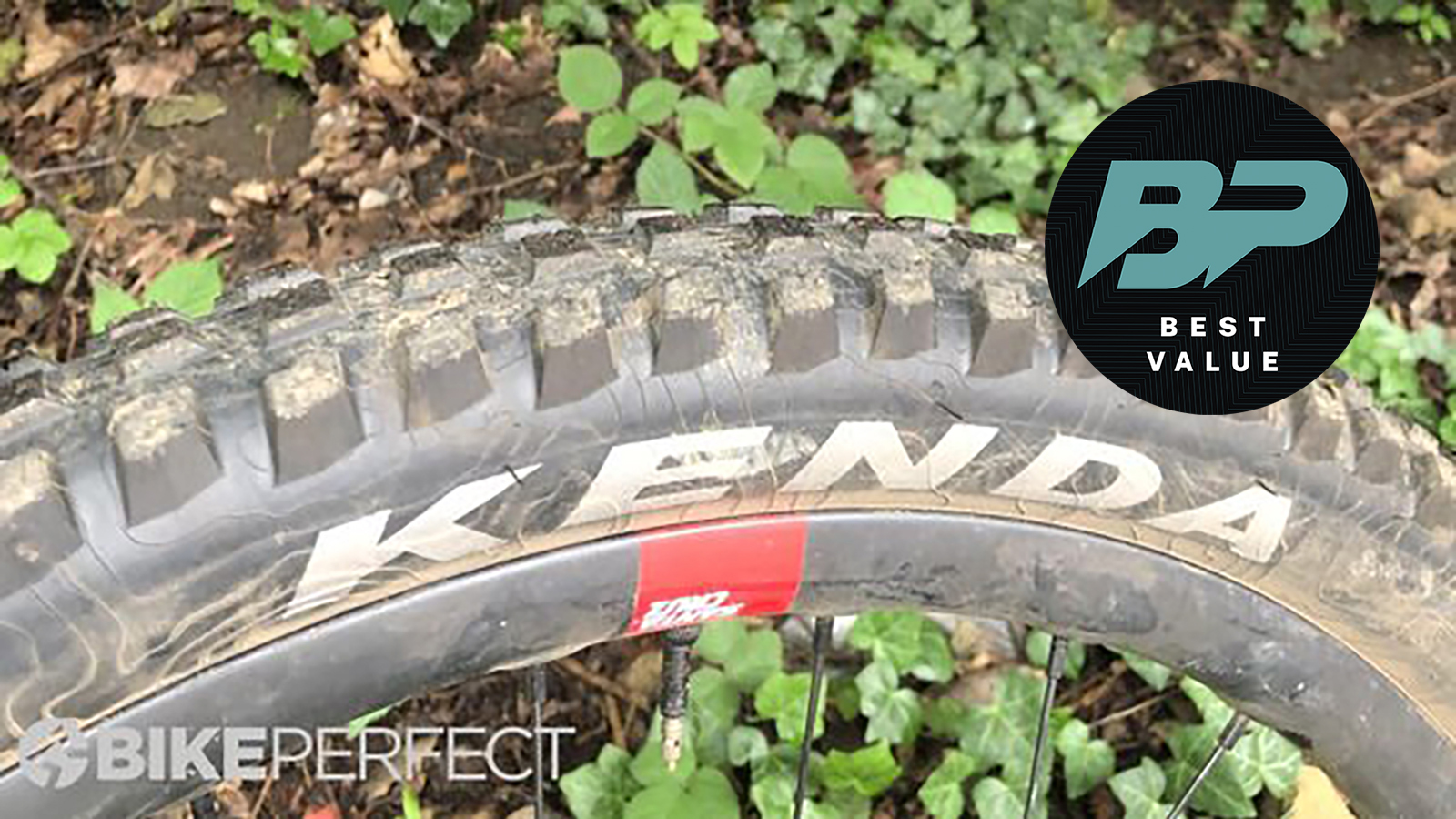
Specifications
Reasons to buy
Reasons to avoid
Kenda's Pinners carry a bit of weight but after back-to-back runs, the Pinner Pro does seem to roll faster than other aggro tires on the market; it might not be a lightweight trail tire sort of speed but the Pinner certainly holds an impressive on-trail pace. The additional weight is noticeable when climbing but it also doesn’t feel as much a chore as some other tough DH-focused options.
If you’re regularly finding the limits of your current tire’s tread pattern or carcass, the Pinner tire from Kenda is a fantastic, solid, durable, and grippy hard-charging option. The Pinner Pro offers predictable levels of grip with a tenacious cornering hold. It may skip or slip before the shoulder knobs engage as you initiate a turn but this is well communicated.
The grip is good but the sublime damped trail feel of the Pinner Pro is its best characteristic. The calming feeling means it feels very sure-footed and controlled by filtering out trail chatter whilst still without dulling communication between rider and traction.
Find out our full thoughts on the Kenda Pinner Pro in our review.
12. Best gravity for cornering
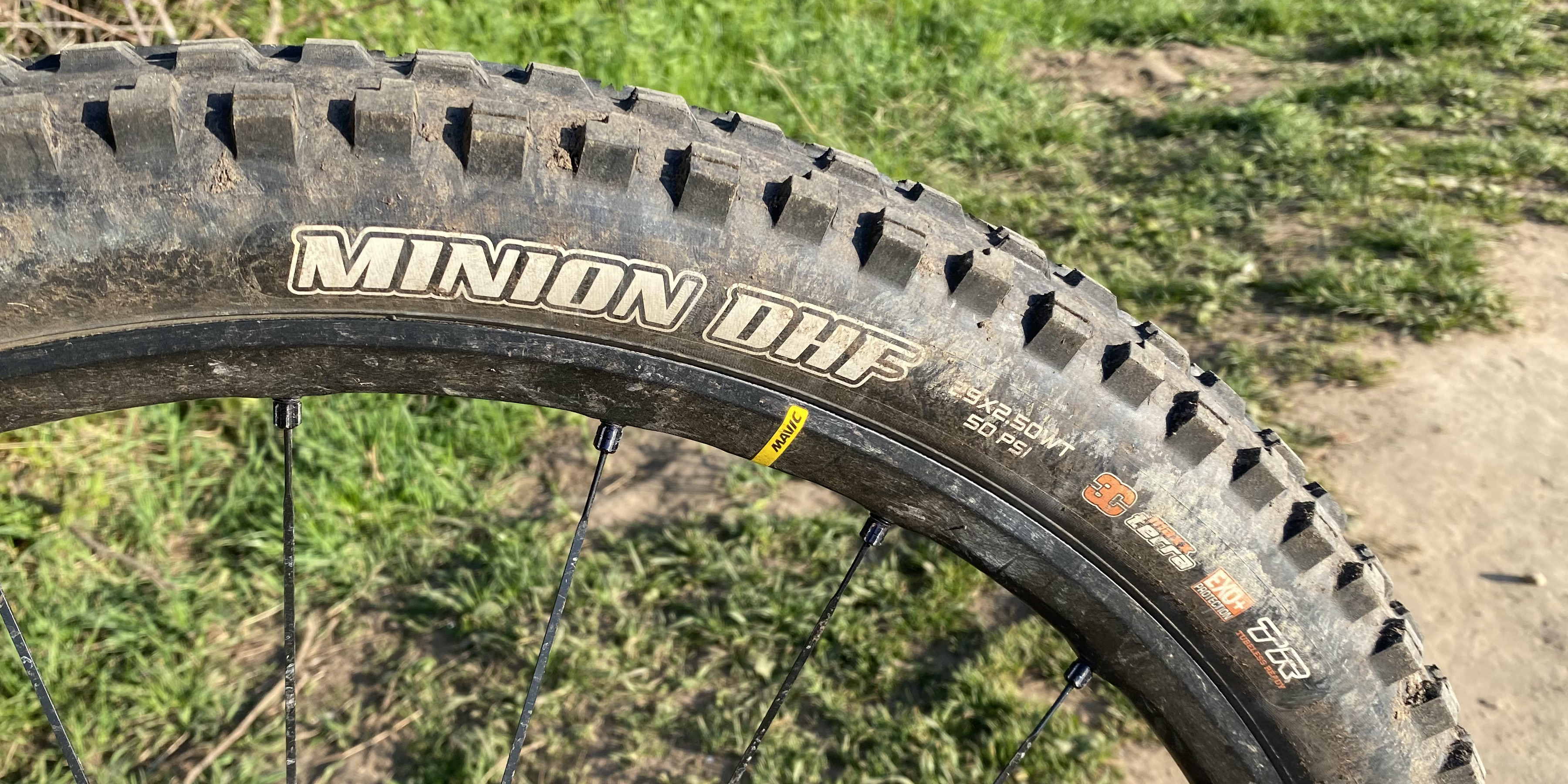
Specifications
Reasons to buy
Reasons to avoid
Since its inception decades ago, the Minion DHF has been the go-to for ultimate cornering performance. The Minion was originally designed as a DHF front and DHR rear-specific tires and while they worked well as a pairing, many riders began experimenting with the setup. As a rear tire, the DHR brings great braking and steep terrain performance and has its own loyal following, however, it was the DHF front and rear combo that quickly gained massive popularity.
The cornering confidence of the DHF is clear straight away too and it's hard to not describe it as feeling like you are 'on rails'. Confidence and predictability is excellent as well and backed up by the Minion DHF's uncanny ability to grip in a huge range of trail conditions. This is lucky as the cornering-focused tread isn't the greatest at slowing you down when the brakes are applied, it still does a decent job although you're best opting for a DHR rear if braking is an important consideration for your trails.
The Minion DHF rolls remarkably quickly too so you can take full advantage of that cornering speed. Maxxis also offers a wide range of casings for the Minion DHF, so while it's aimed at gravity riding there are lighter options to bolster trail bike grip without too much extra weight.
Check out our full review of the Maxxis Minion DHF tire for more.
13. Best gravity for stability
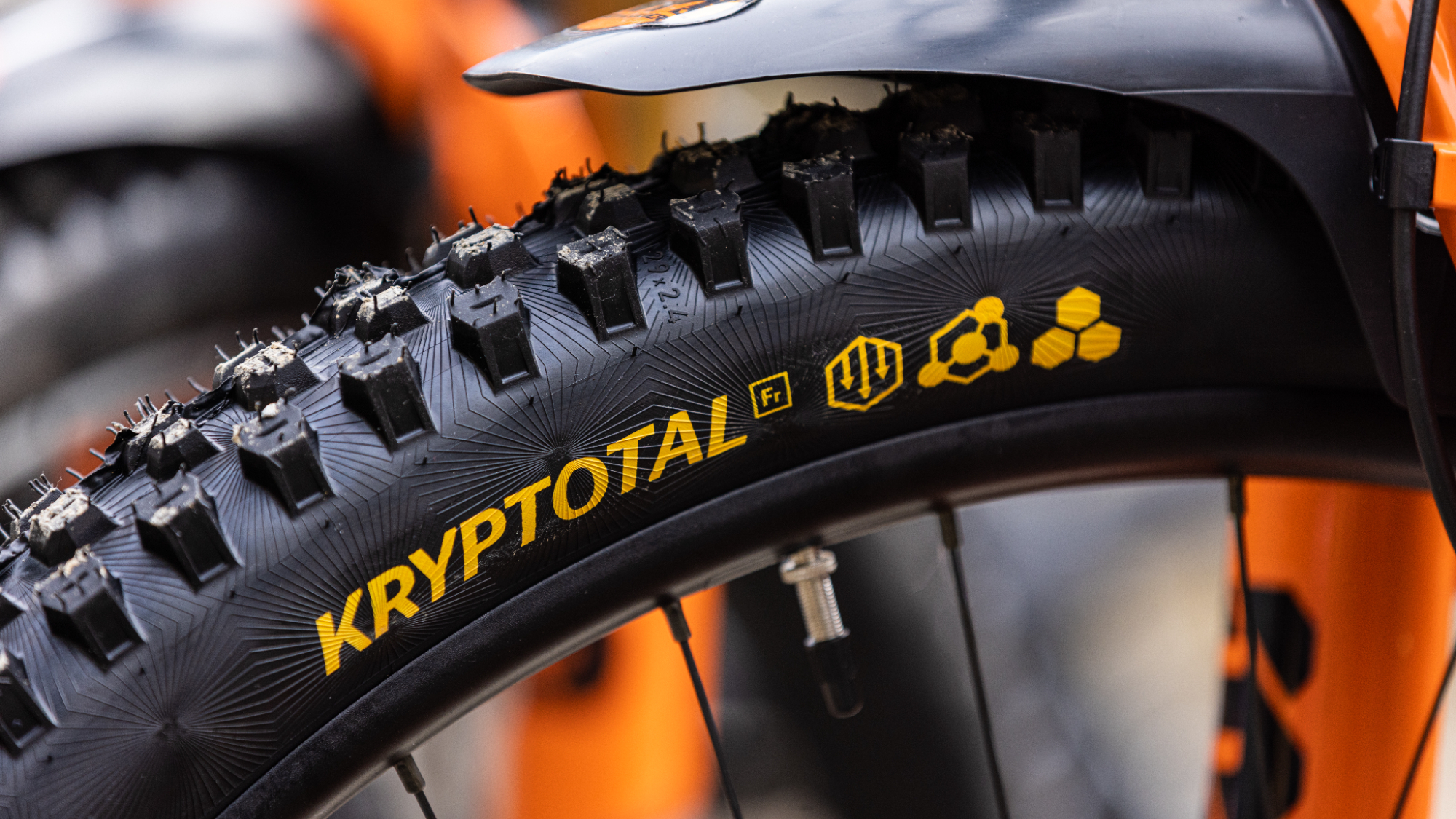
Specifications
Reasons to buy
Reasons to avoid
Designed in partnership with the Atherton Racing Team, Continental has completely redesigned its gravity tire range. At the forefront of this range is the Kryptotal, a mixed-terrain tire that comes in front and rear-specific designs.
The two tires are focused on specific tasks, namely turning upfront and braking and acceleration traction at the rear. They can of course be used separately, however, when we rode them the front-rear pairing felt very complementary to each other. In terms of handling, the front is very predictable and can be pushed into corners without too much worry that it's going to unexpectedly snap free. The corresponding rear digs in deep too, giving sharp braking and precise speed checks. Despite dropping down to low pressures the Kryptotal remained stable with very little awkward squirming and no hint of burping.
They can start to feel a little overwhelmed when conditions become soft due to the tight tread pattern however if you are predominantly riding in these conditions you will be better served by the Continental's Argotal which is targeted at loamy conditions.
For more information, check out our first look at Continental's new gravity tire range.
14. Best gravity front tire
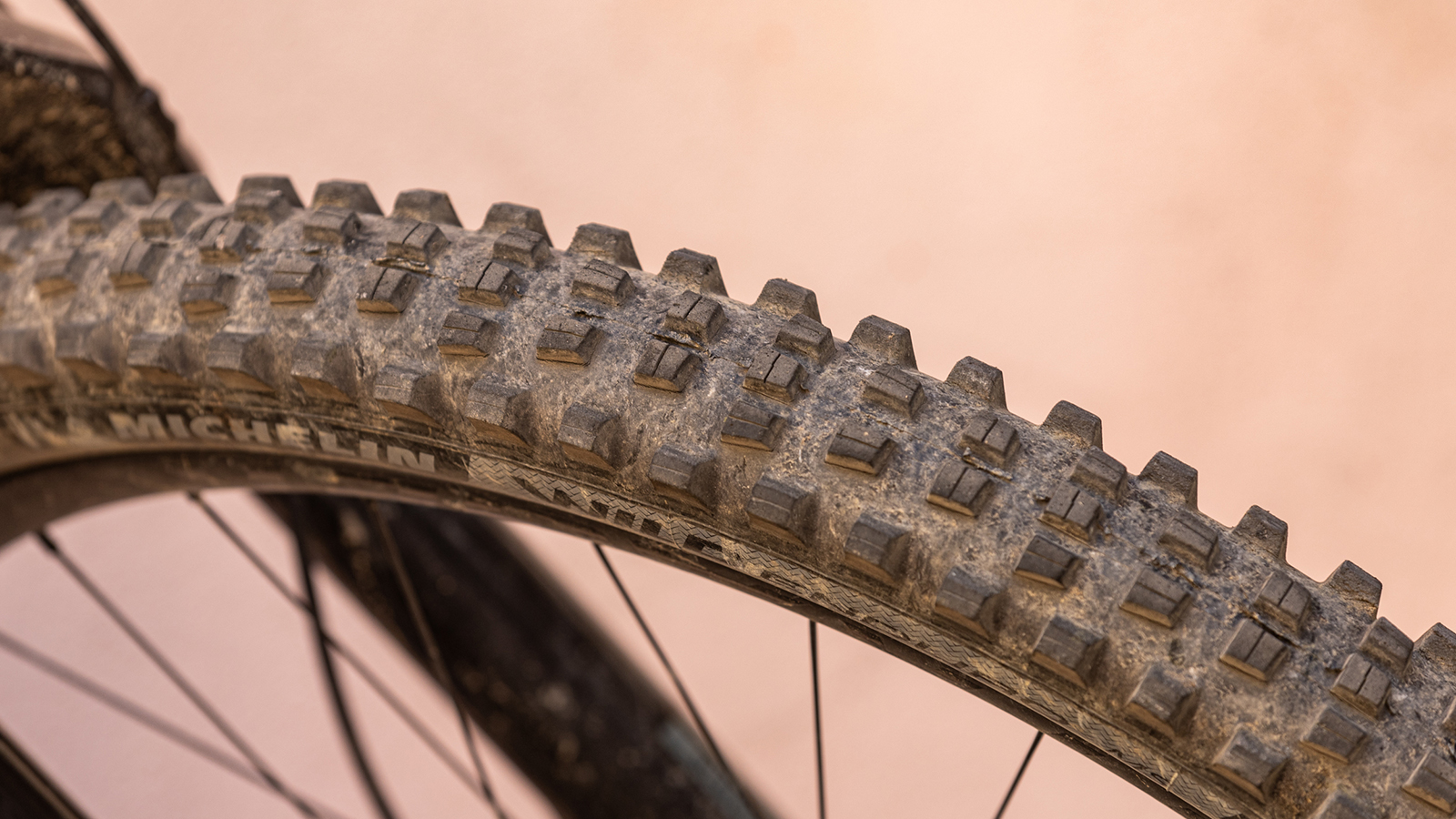
Specifications
Reasons to buy
Reasons to avoid
The Wild Enduro MS is a new tire from Michelin featuring an updated tread pattern, reformulated compound, and specced lighter casing.
Mick Kirkman put them to the test and found that the changes made a significant improvement in performance over previous Michelin tires. The new tread pattern works well in wet and dry conditions and gives predictable handling as you lean into corners. The opened-spaced tread has enough height to dig into loamy trails without becoming squirmy and vague on hard-pack sections.
New Magi X rubber and Dual Ply side wall construction also play a significant part in the tire's performance too. The new rubber can carry noticeably more rolling speed and combined with the reduced carcass weight gives the Wild Enduro MS a more lively ride feel compared to the dull and heavily damped character of previous models.
For more, see our full Michelin Wild Enduro MS review.
15. Best gravity tire for winter
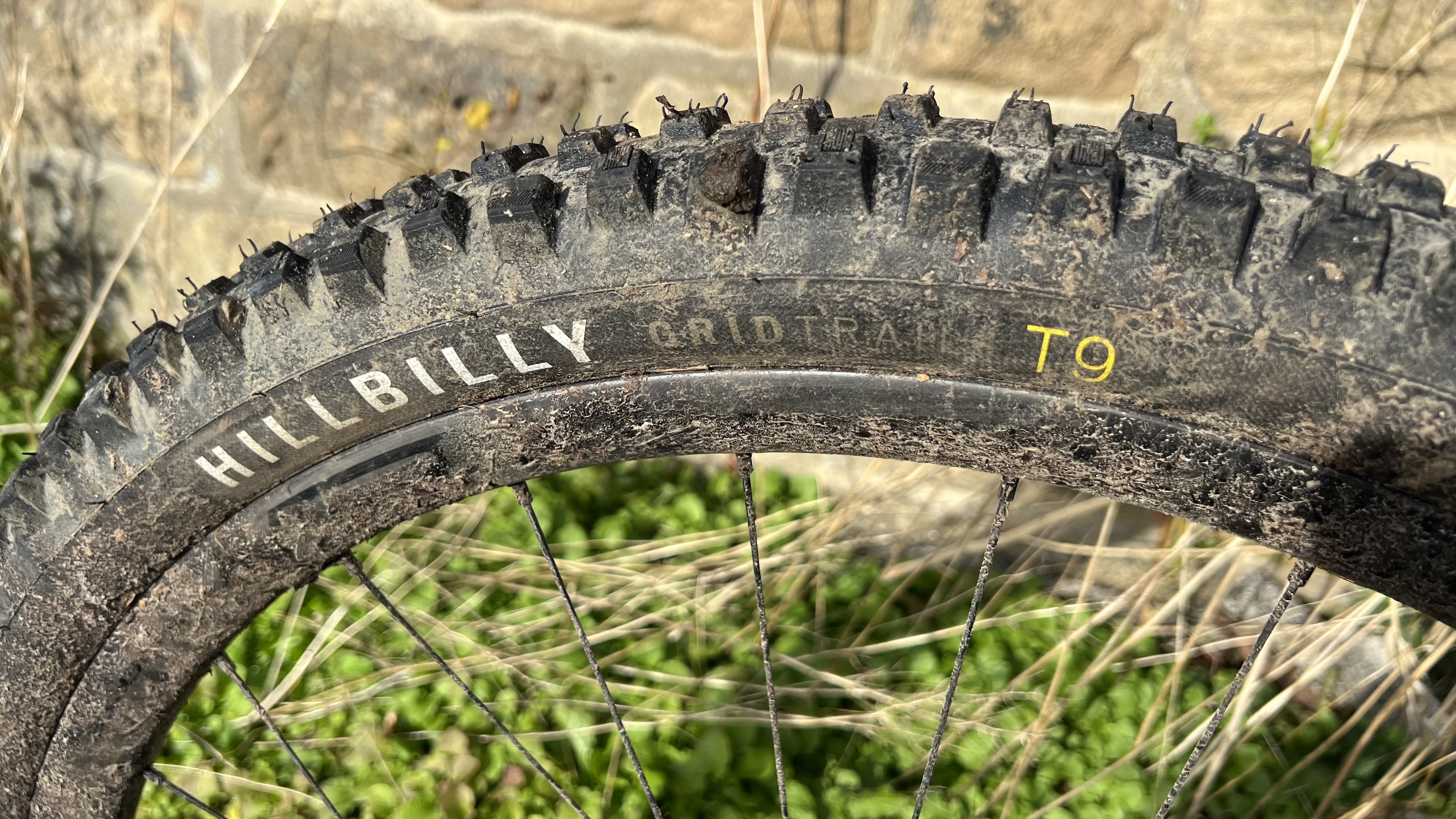
Specifications
Reasons to buy
Reasons to avoid
If you're after a tire that will give you grip in the worst of wet mud, then look no further than the Specialized Hillbilly. The tire uses the same excellent Gripton T9 60TPI compound as the Specialized Butcher.
The center/shoulder tread pattern is very different though, following the classic ‘square studs with plenty of space around them’ format of most good soft condition tires. The Hillbilly runs alternating pairs of knobs close together for a slight paddle effect and the knob tops are siped (slotted) to help them to reshape and spread under load.
Weight is average for a modern 2.4in ‘trail tire’ at 1,074g, but at 59mm across, they’re actually closer to 2.3 than 2.4in wide. There’s also a Gravity Grid version but that takes weight beyond 1,300g, which is a hefty pedaling punishment for bombproof survival.
Prices for the Hillbilly and the rest of Specialized's tire range are extremely competitive, which makes the Hillbilly an even better choice.
For more info, check out our full Specialized Hillbilly tire review.
16. Best gravity tire for durability
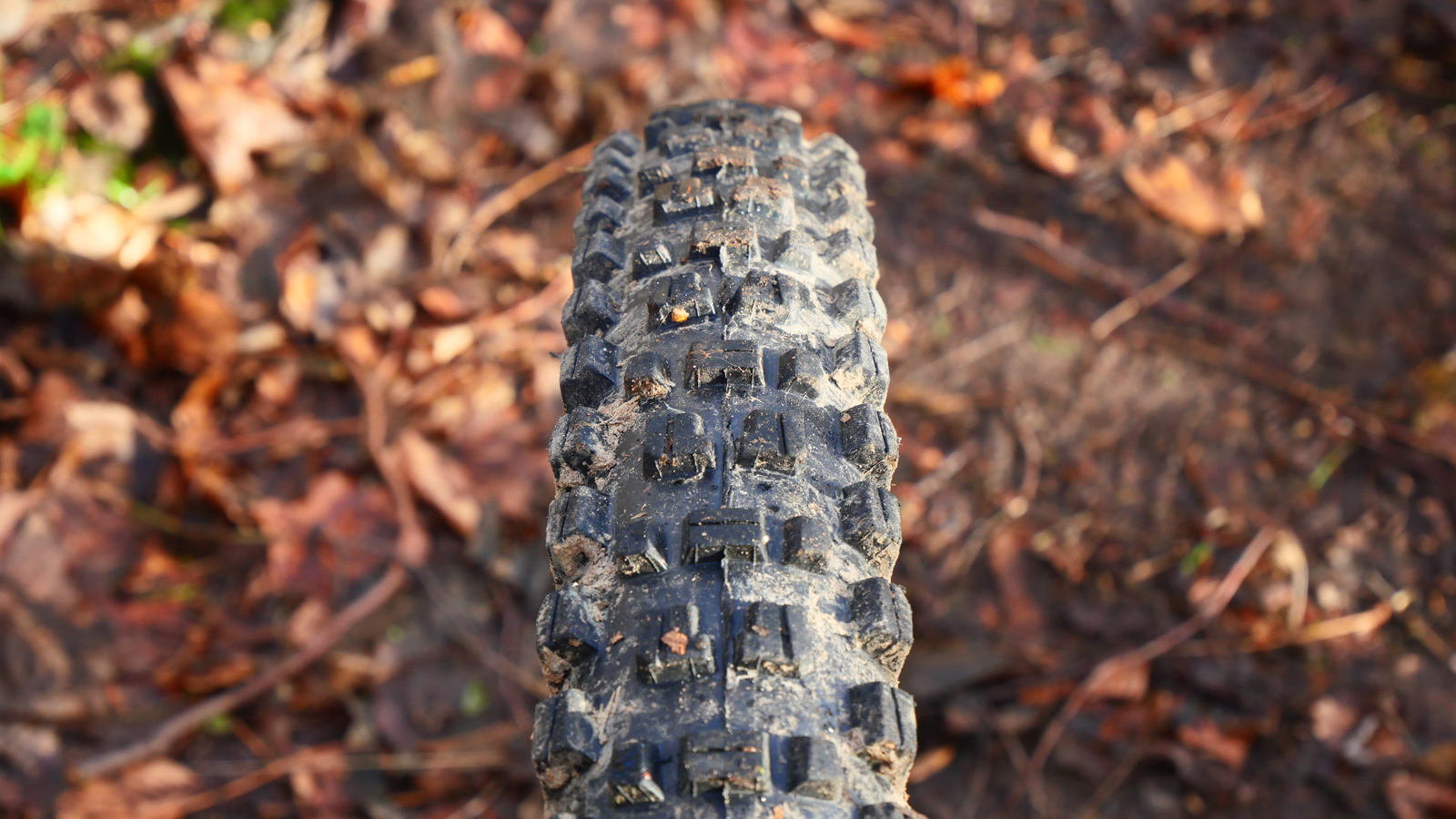
Specifications
Reasons to buy
Reasons to avoid
e*thirteen is probably not the first brand you think of when choosing new tires, but the component manufacturer has been in the tire game for a while. The Grappler is its gravity-focused tire and is available in enduro or downhill casings and Endurance and MoPo compounds.
MoPo is e*thirteen's softest compound and proved to offer loads of grip even in wet and challenging conditions. It wasn't just the confidence these tires gave us on rocky, rooty, and off-camber sections that impressed us, but also the rate of wear. Usually, soft compounds will wear rapidly but the MoPo rubber has handled the test of time well.
You will be particularly glad of the tire's longevity once you have fitted them too, as we found both the downhill and enduro versions to be a proper fight to get them onto our rims. Once on though they are very secure and stable with sidewalls that have proven resilient to punctures.
The combination of grippy tread and durable construction means the Grapplers are heavy and the soft compound slows rolling speeds. If you're doing a lot of self-powered climbing they will be a drag, but if you have the gradient to play with or a motor to assist it's less of an issue.
To read more about the downhill and enduro versions of this tire, check out our full e*thirteen Grappler MoPo downhill review.
How to choose the best mountain bike tires
Not all mountain bike tires are created equal and there are a number of different factors that will determine the way they perform. These include such specifics as rubber compound, durability, puncture protection, tread pattern, tire width, and tubeless compatibility. As such you’ll find that a cross-country-specific tire is lighter, narrower, and less aggressive than a trail or enduro equivalent, owing to differences in bike geometry, terrain, and riding discipline.
Generally, more cross-country-focused tires will have smaller knobs with less rolling resistance. They're also lightweight at the expense of puncture and sidewall protection. Tires meant for more aggressive trail and enduro riding will have bigger knobs, with the biggest chunks of rubber being on the shoulder of the tire. This allows riders to dig into loose terrain and maintain the maximum amount of grip.
Each manufacturer has its own rubber formulations and technologies. The most popular brands will offer their models in a broad array of widths, wheel sizes, and even carcass or casing technologies. This is good news, as riders can choose what works best for them and their local trails.
Are wider mountain bike tires better?
It might seem logical that bigger tires will offer more grip but it's not always the case. In many circumstances, a wider tire will offer more grip as the tire's contact with the ground is increased. However, in soft or muddy conditions where grip is achieved by the tread digging into the surface, a narrower tire may provide a better grip as it's able to cut through the soft surface to find a better purchase.
Most mountain bike tires will measure between 2.35 and 2.6 inches, however, the best MTB tires for mud and cross-country tires that prioritize rolling speed will often measure 2.2 inches and lower. You do get larger tires with 2.8 inches becoming a popular size for the rear wheel of the best electric mountain bikes and the now less popular Plus tired mountain bike.
There is more to grip than the size of the tire as the tread pattern plays a far more significant role in a tire's characteristics and performance.
What tire tread should I choose?
A tire's performance is directly related to the tread pattern, the shape, spacing, and size of the tread, which will all determine the conditions and style of riding that it will excel at.
Smoother low-profile tread patterns will roll quickly in dry conditions whereas wider spaced spiked style tread will dig into muddy trails for wet weather grip. Some tires will even come in front and rear-specific patterns with angled front knobs offering better cornering and block knobs for braking or climbing.
Some tires will feature cuts on the treads called siping. This helps large tread features to be more malleable to the trail surface and adds another edge to create more grip.
Ultimately the tire tread that works best for you will be determined by the trail conditions when riding and your personal preference.
Head over to our how to choose a mountain bike tire feature for more information on how to pick the best MTB tires for your riding.
How does sidewall strength effect a tire?
While tread will dictate a tire's grip performance and intended riding conditions, the sidewalls play a key role in allowing the tread to perform well. When a tire is described as supple this refers to the sidewall's ability to conform to the terrain as you ride a trail. A supple sidewall allows the tread to deform to the ground to absorb vibrations and deflections from rough sections.
However, this comes at a trade-off against a tire's ability to withstand pinch flats and cuts caused by hard landings, rocks, and roots. Most brands will offer a range of different sidewall options suited to general cross-country, trail, enduro, or downhill riding.
Does tire pressure matter?
There is also an invisible element that has a direct bearing on the way your tires react to the terrain — tire pressure. Depending on which type of riding you prefer, tinkering with your mountain bike tire pressures might yield greater traction gains on one hand but better rolling resistance and speed on the other; it all depends on how hard or how soft you’re willing to go.
However, too high and the tire won't conform to the ground, losing grip and transferring more trail feedback through the handlebars. Drop pressures too low and the tire will be more susceptible to punctures, rim damage, and will feel unsupported in corners giving a squirming feeling.
Generally, riders will run the front tire a few PSI softer than the rear for better front tire grip and less puncture risk at the back. Many brands will offer a tire pressure calculator on their website which will account for the tire, spec, rider weight, and riding style in order to determine your optimal pressures. These are always a good starting point although it's worth experimenting to find the optimal PSI for you. We recommend sessions on a typical trail for your area to dial in the right pressures to get the best MTB tire setup.
Are mountain bike tires tubeless?
These days tubeless mountain bike tires are now the norm with tubeless compatible rims and tires being standard on all but the cheapest mountain bikes. Due to there being so many advantages to a tubeless setup when mountain biking, all tires that are worth buying are available as tubeless compatible.
How we test mountain bike tires
All the tires we've tested here have been thoroughly tested in many different weather conditions, from dusty dry to the wettest, filthiest mud, and on a wide range of trails. We test them out over several months, assessing their performance for grip, stability, mud clogging, damping, rolling speed, weight, ease of setup, and durability.
Meet the testers
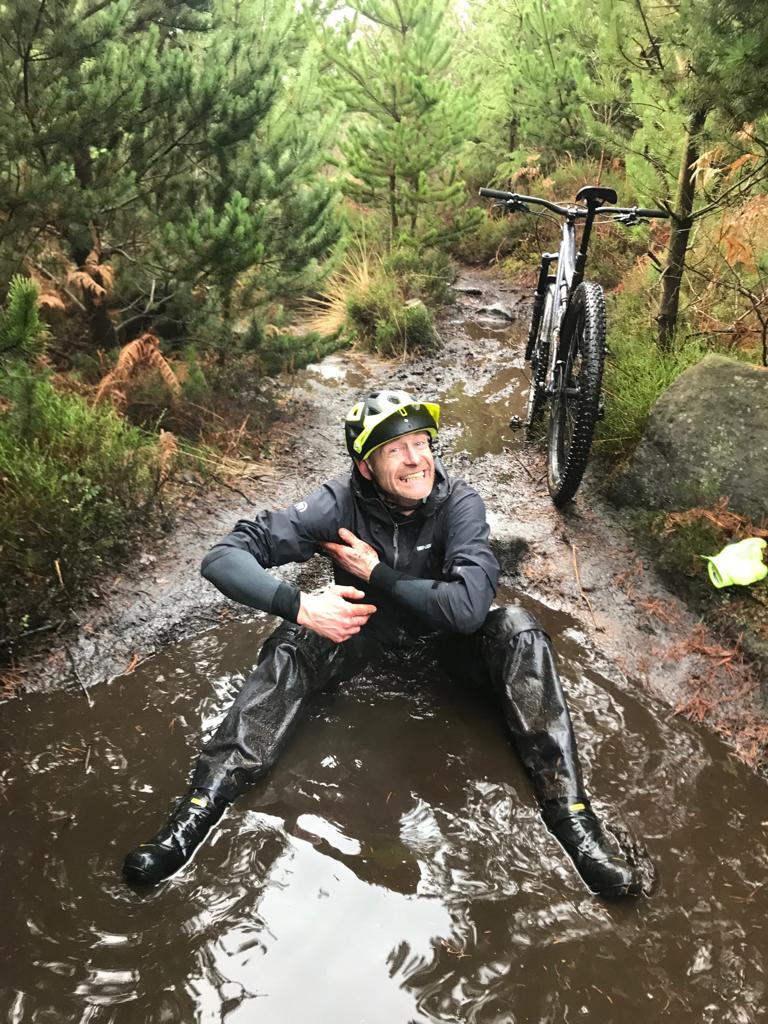
Guy's been testing and writing about mountain bikes since the 90's, he’s written several million words about several thousand test bikes and a ridiculous amount of riding gear. We are willing to bet that there aren't many tires Guy hasn't ridden over the last decade.
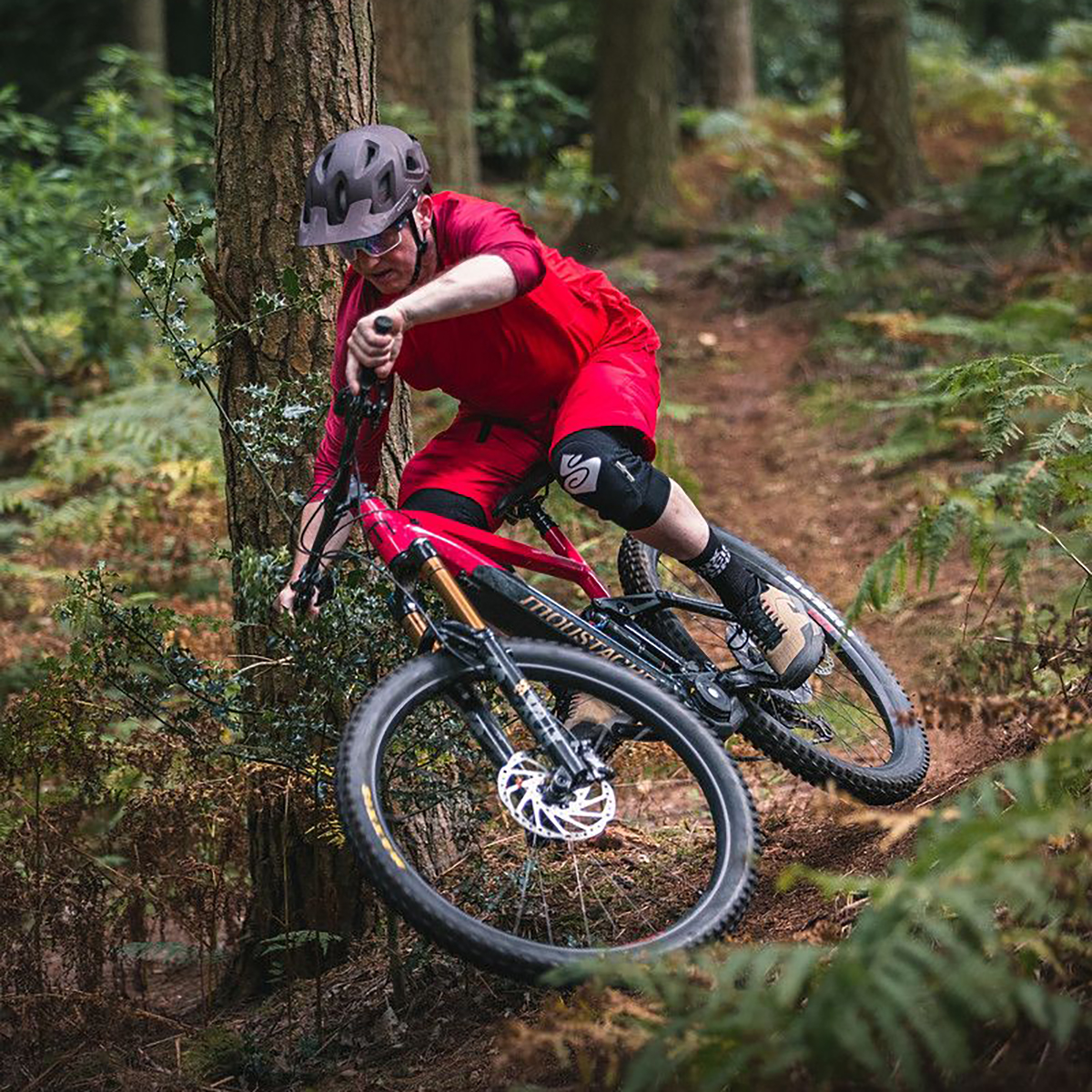
It feels like Paul has been testing bikes and products since the stone age, before suspension, disc brakes, dropper posts, and even the internet. He raced elite-level Cross Country back in the 1990s but now spends most of his time roosting trails instead.
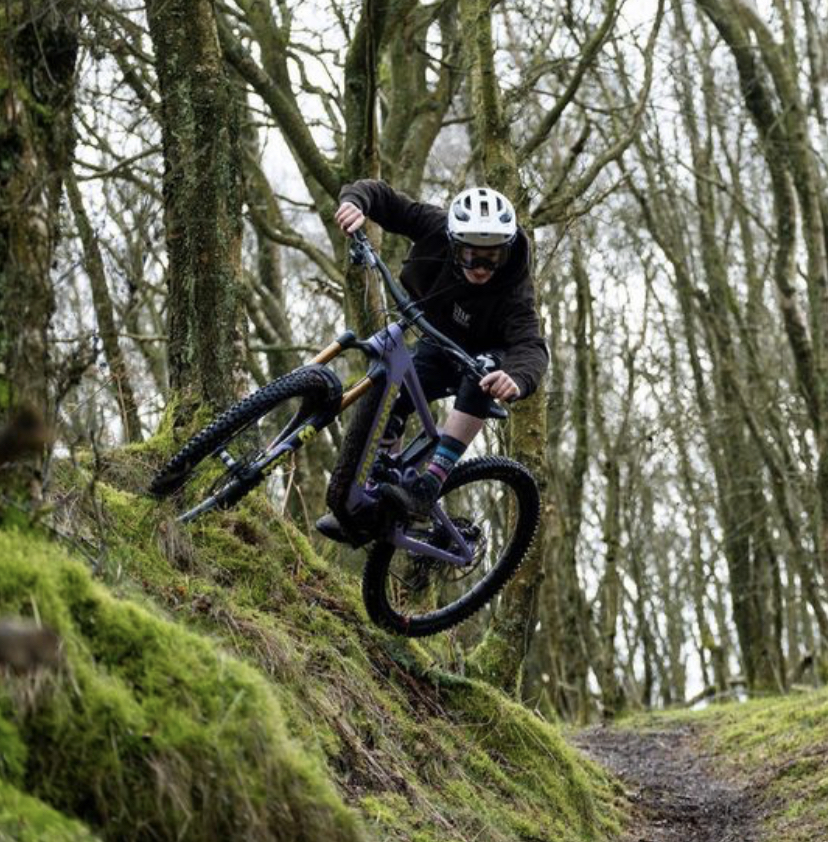
Jim Bland is a product tester and World Cup downhill mechanic based in North Yorkshire, England, but working worldwide. Jim’s chosen riding genre is hard to pinpoint and regularly varies from e-bike-assisted shuttle runs one day, to cutting downcountry laps the next.
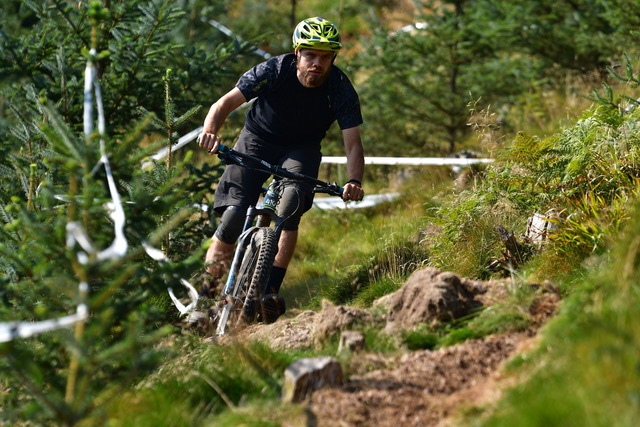
Graham is all about riding bikes off-road. He has some of the best mountain biking in the UK right on his doorstep. With almost 20 years of riding experience, he has dabbled in downhill and enduro MTB racing.

Graham Cottingham joined the BikePerfect team as our senior tech writer in 2020. With over 20 years of riding experience, he has dabbled in downhill, enduro, and gravel racing. Not afraid of a challenge, Graham has embraced bikepacking over the last few years and likes nothing more than strapping some bags to his bike and covering big miles to explore Scotland's wildernesses. When he isn’t shredding the gnar in the Tweed Valley, sleeping in bushes, or tinkering with bikes, he is writing tech reviews for BikePerfect.
Rides: Cotic SolarisMax, Stooge MK4, 24 Bicycles Le Toy 3, Surly Steamroller
Height: 177cm
Weight: 71kg
